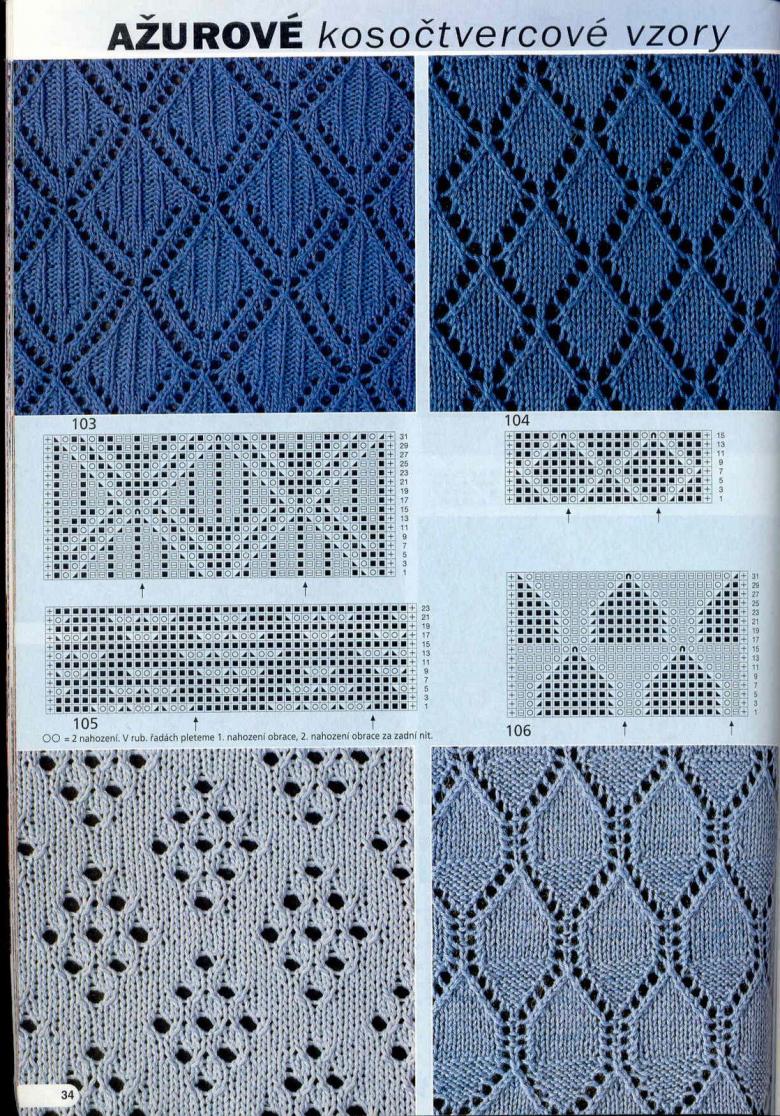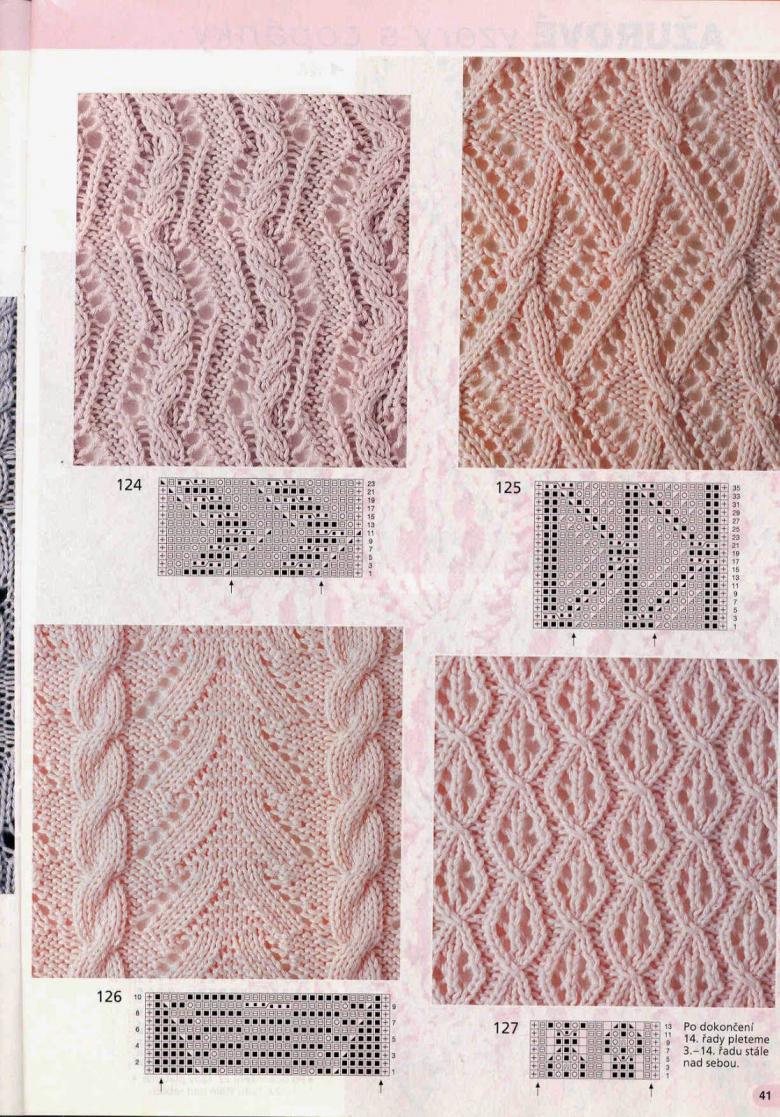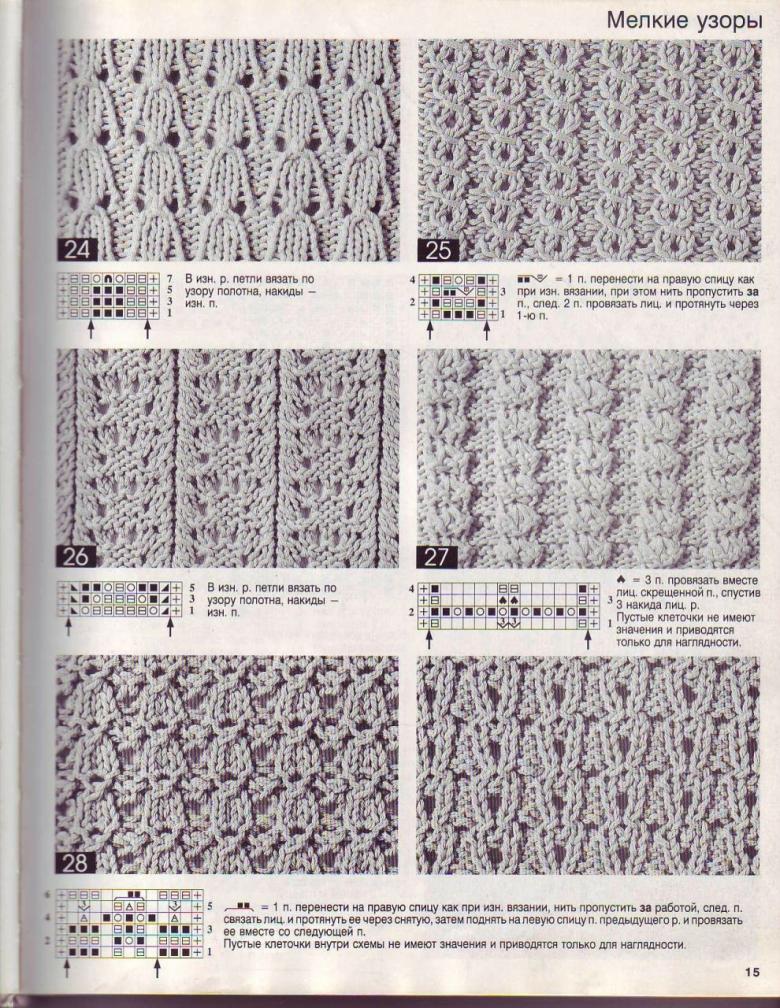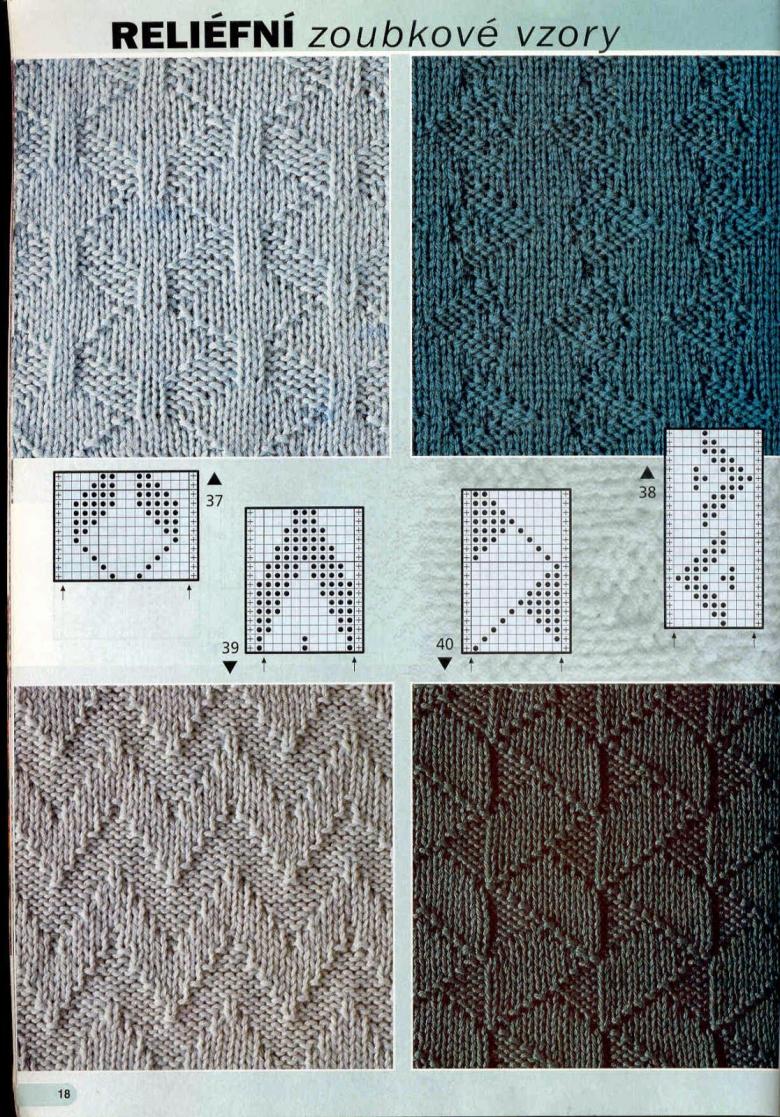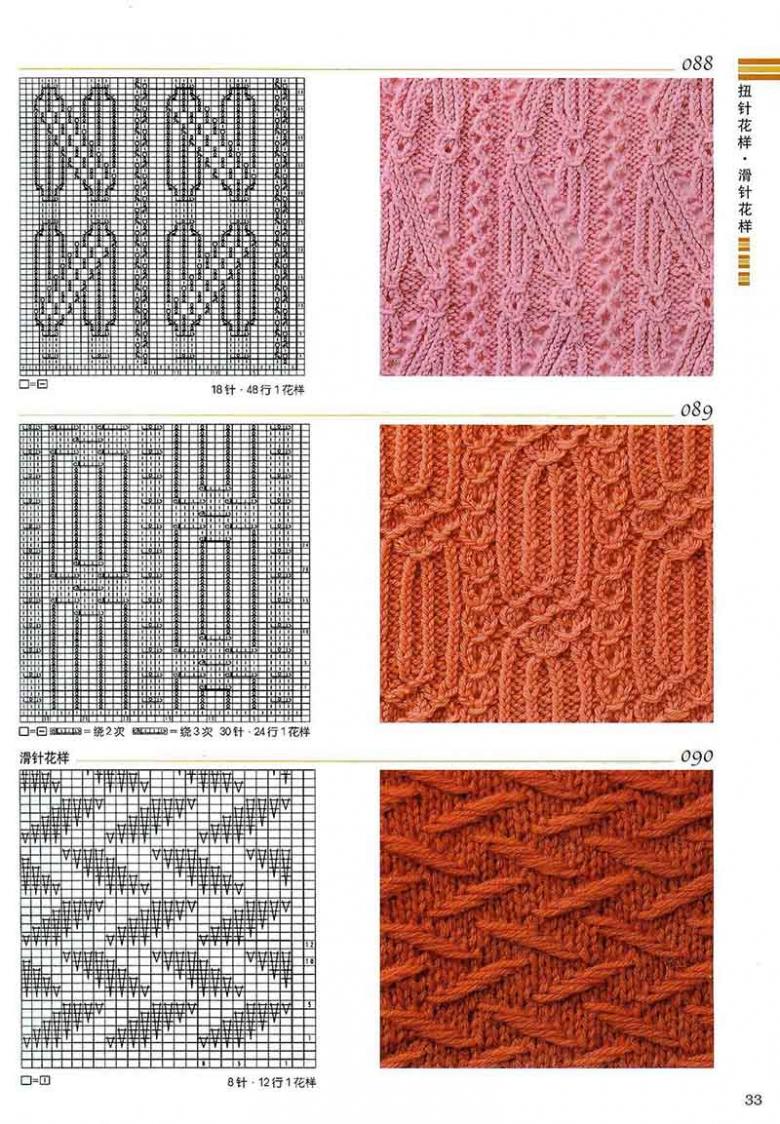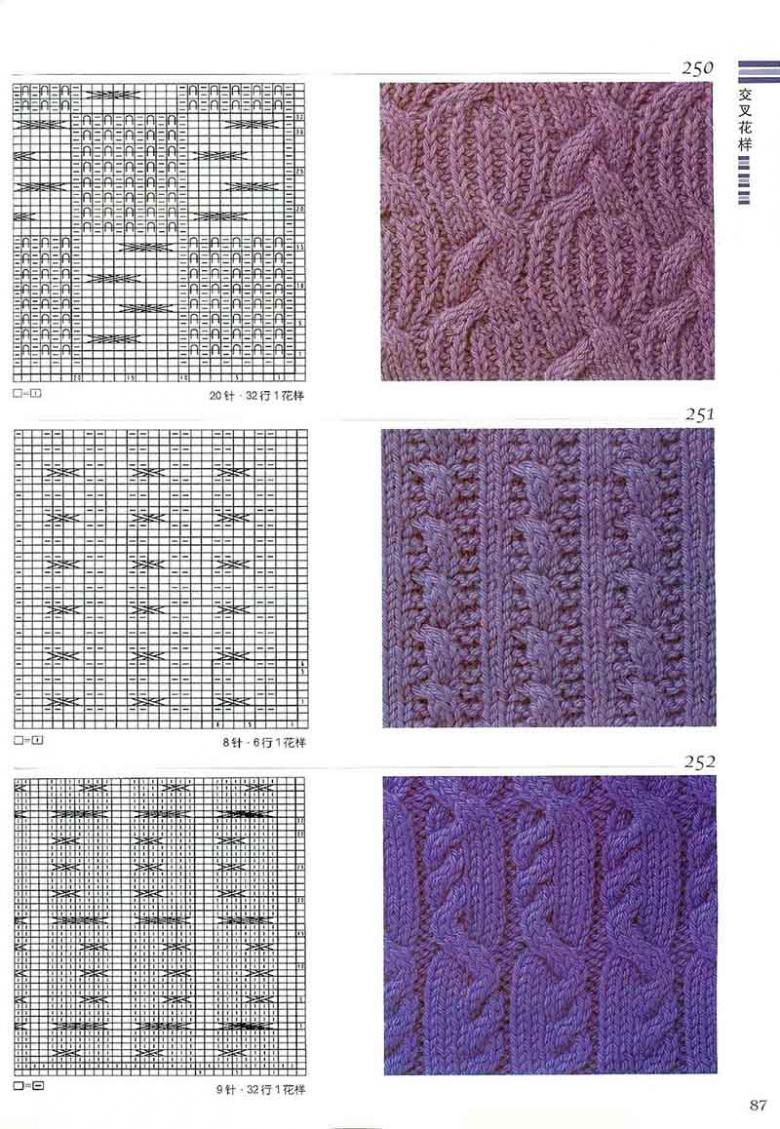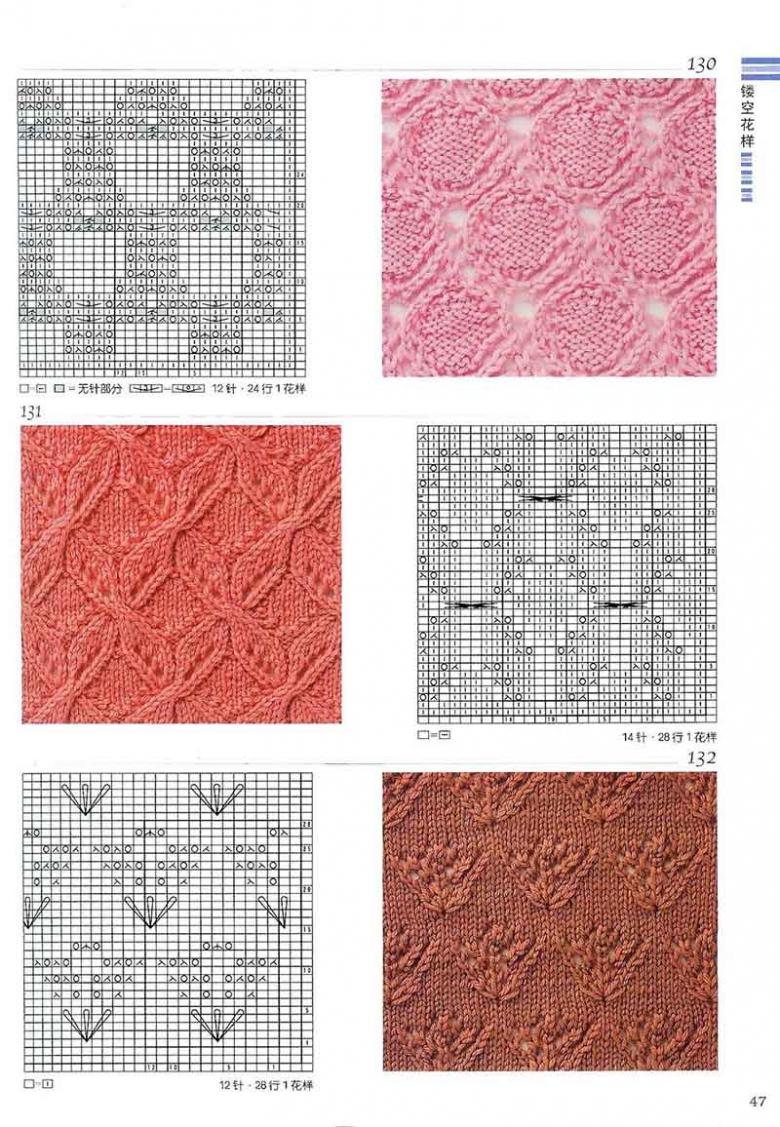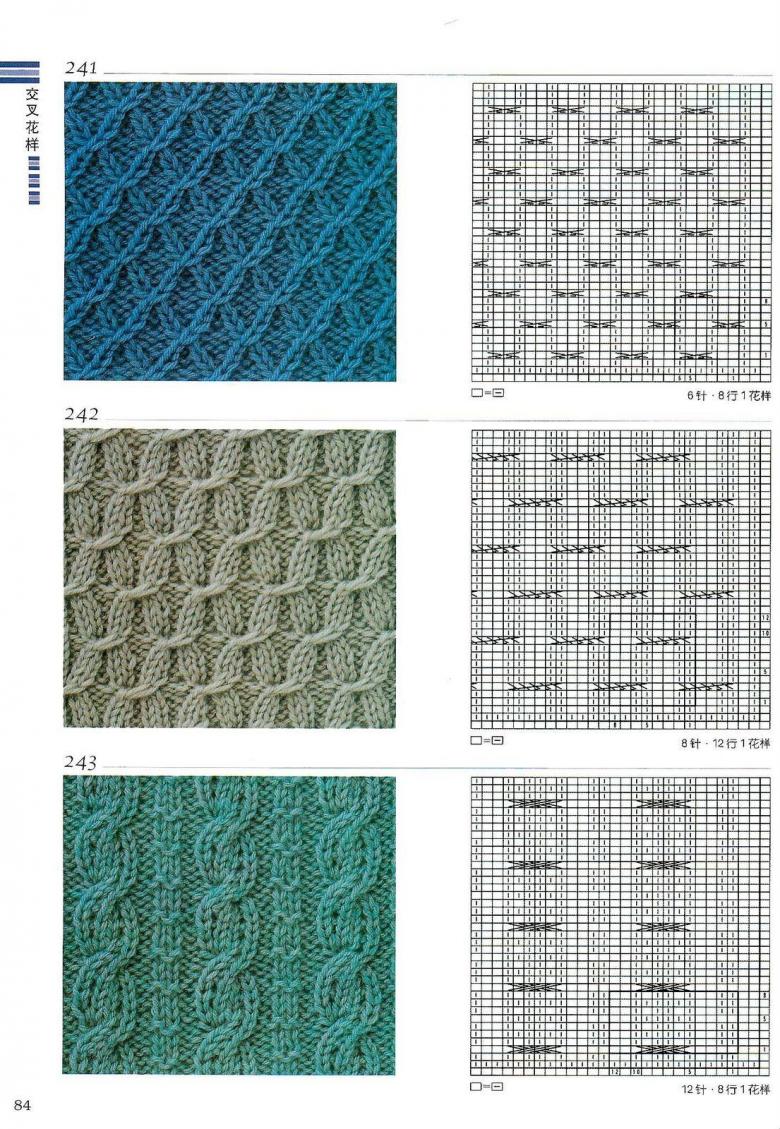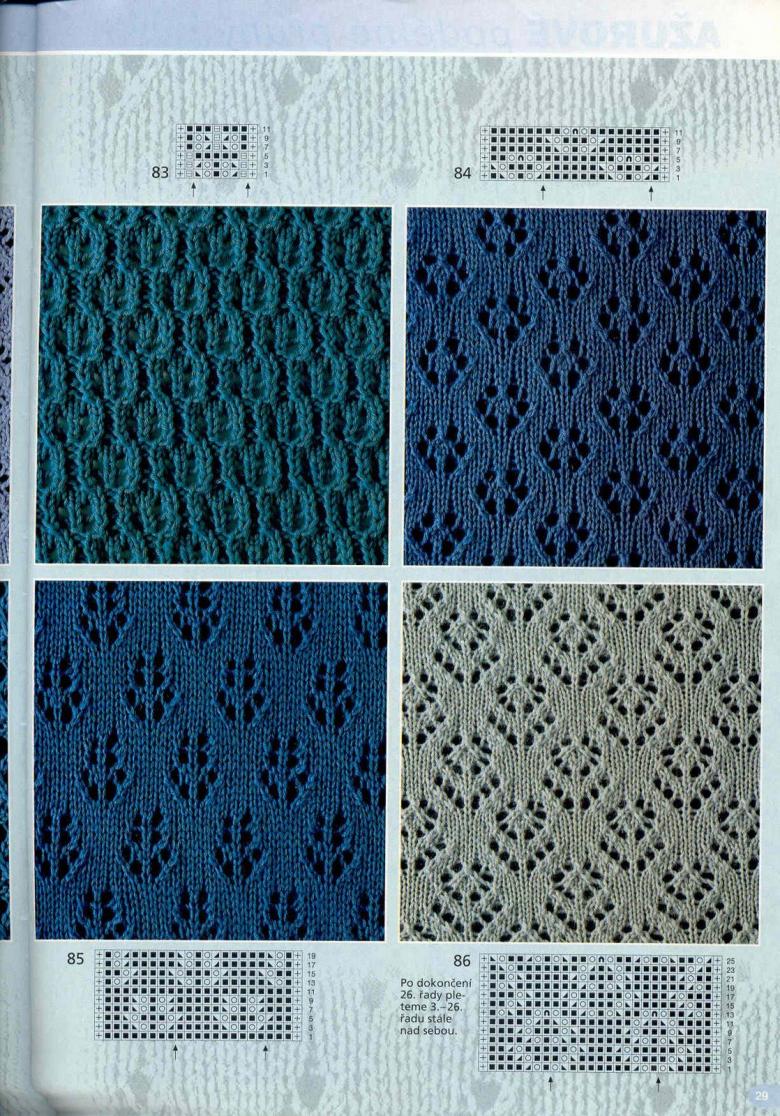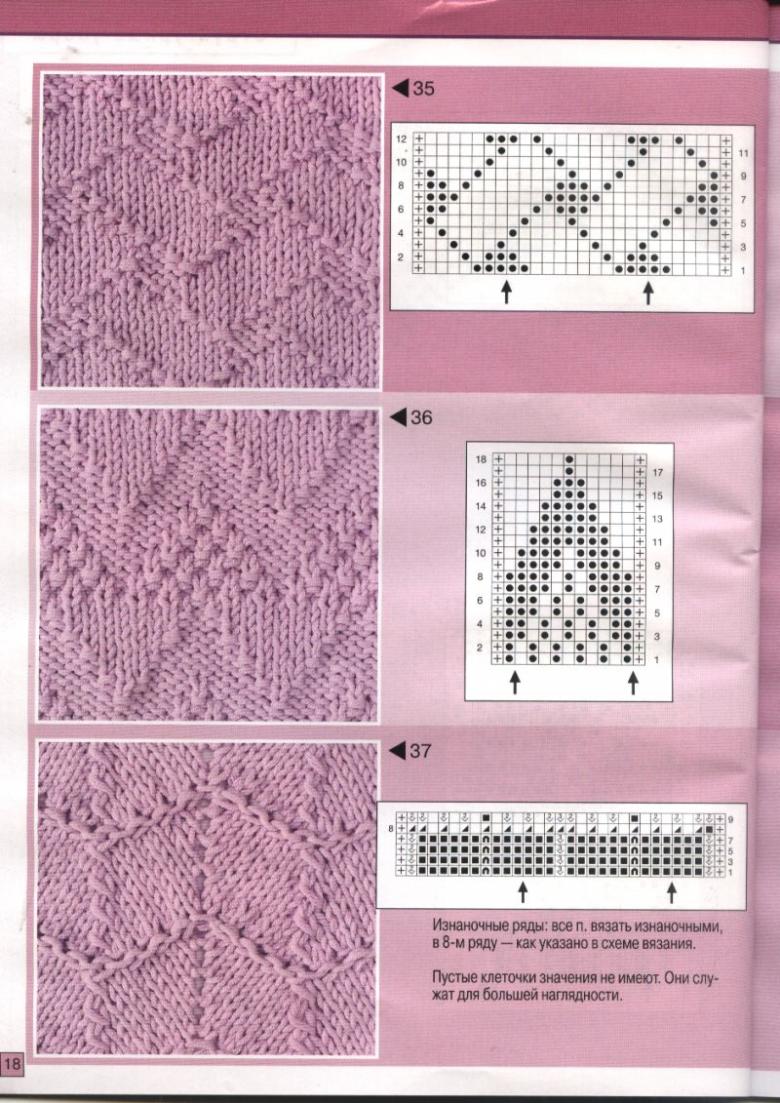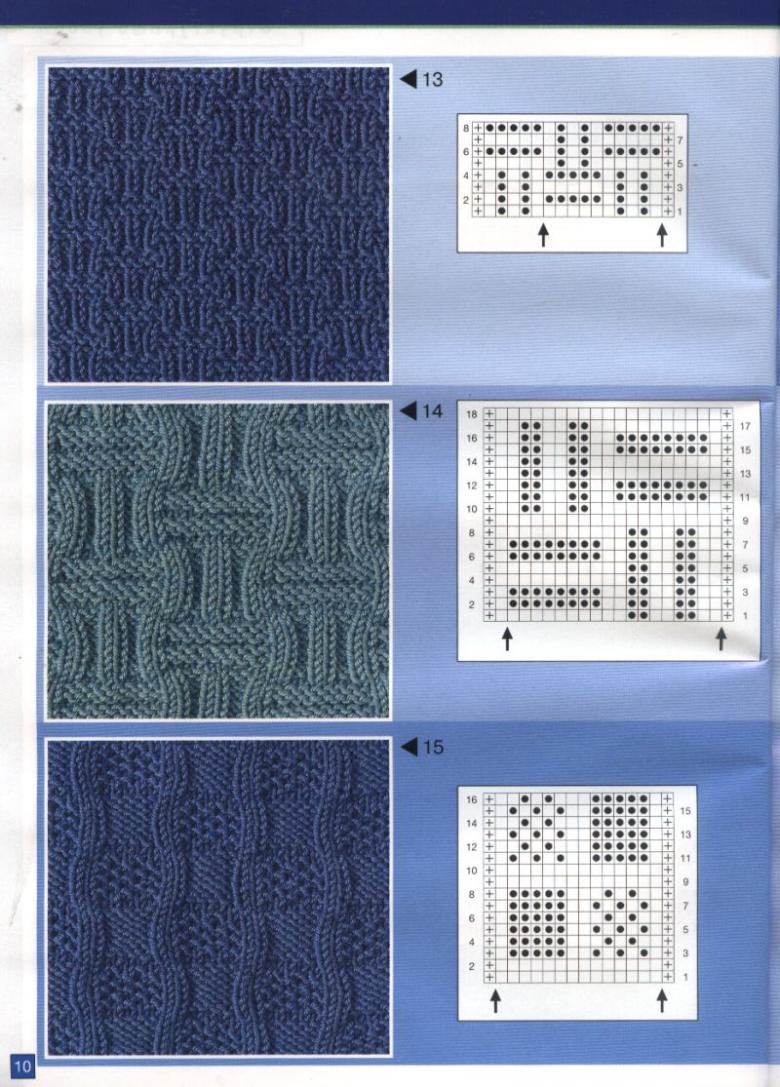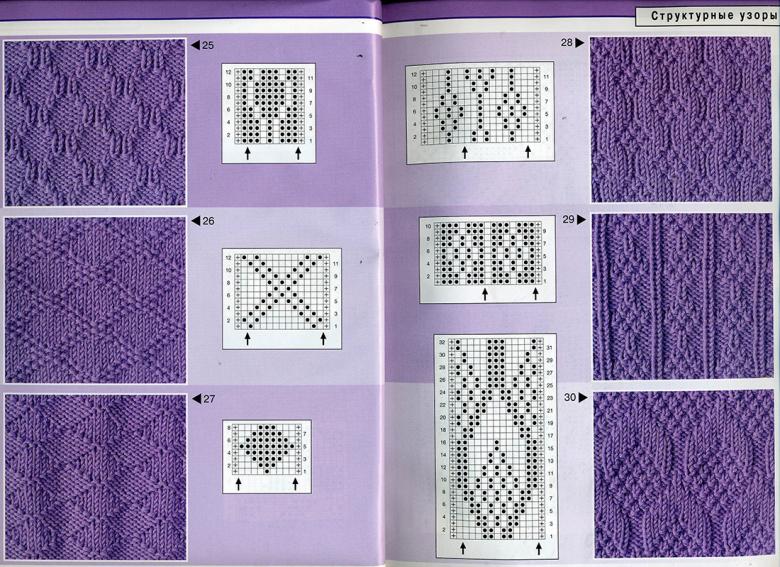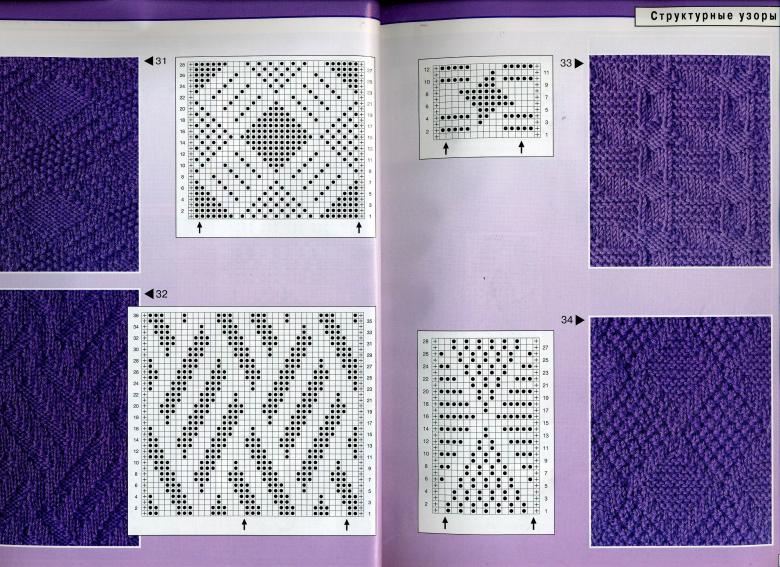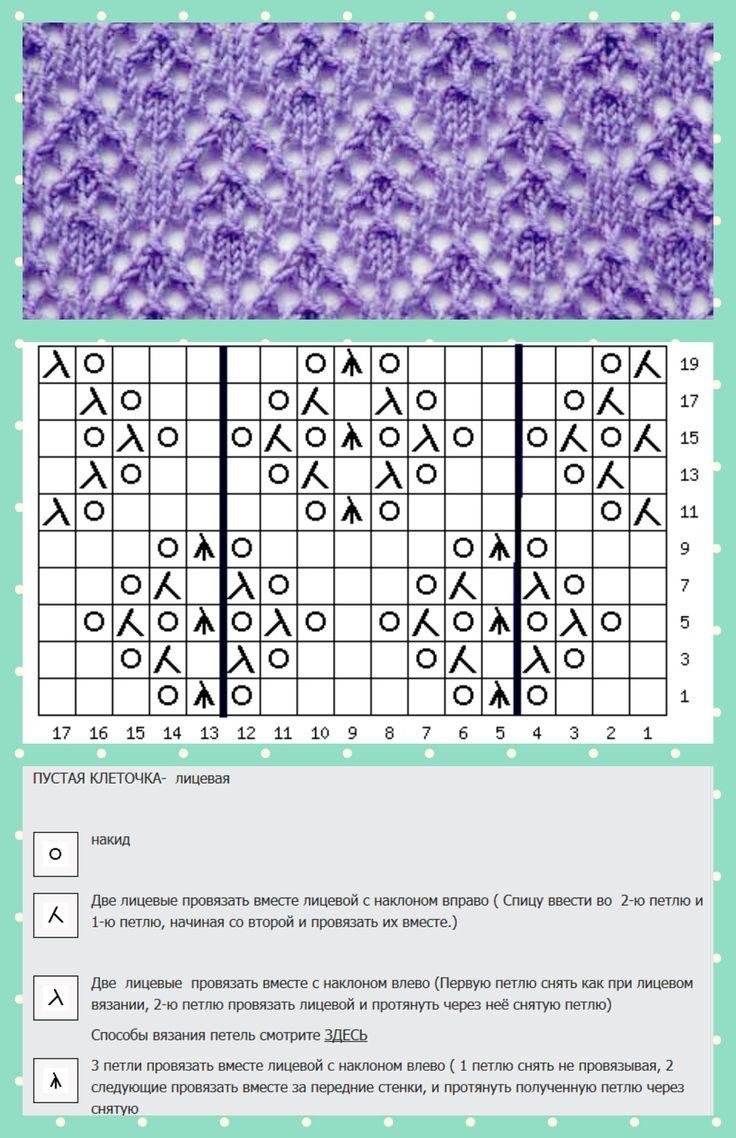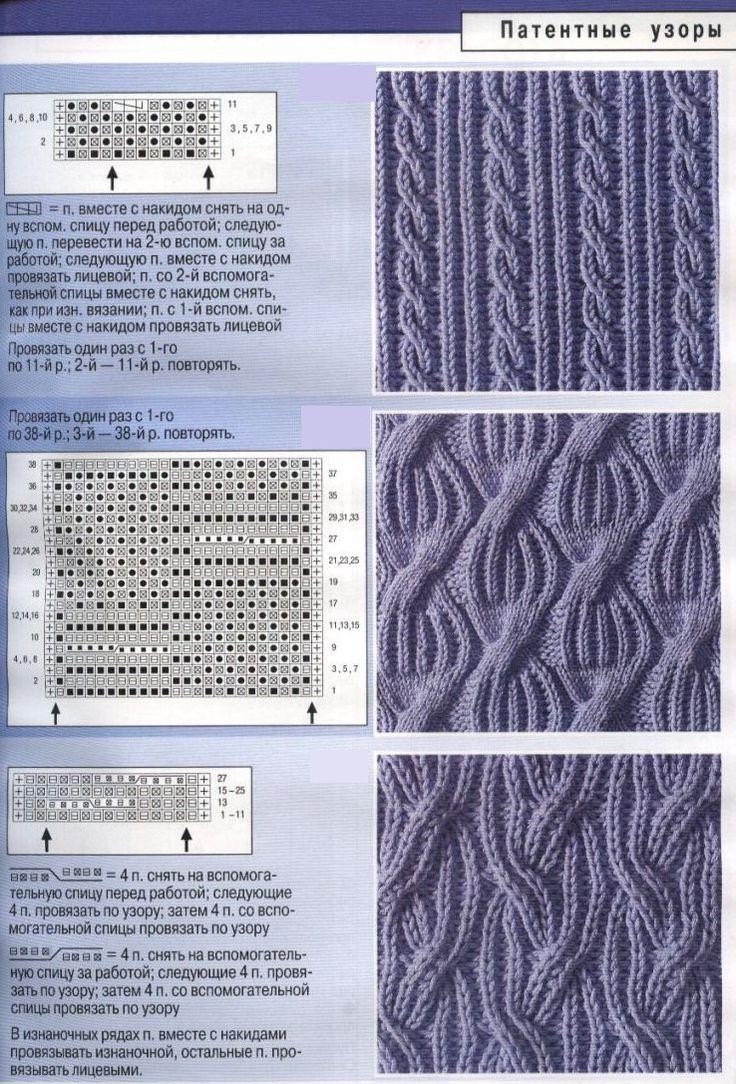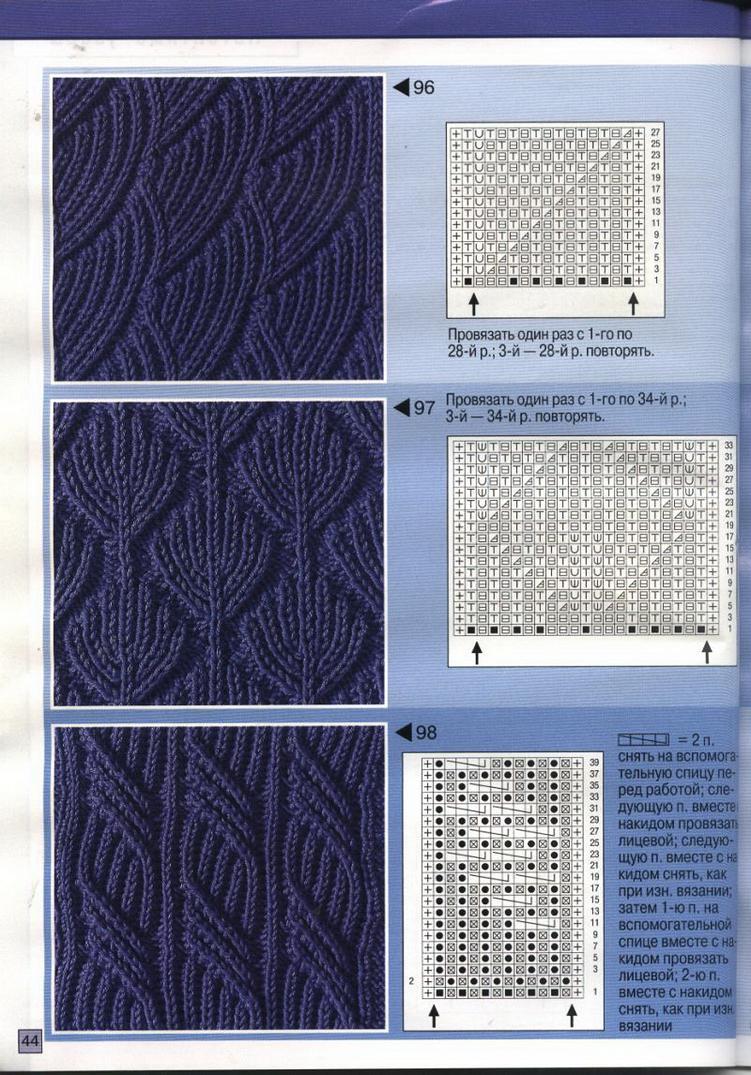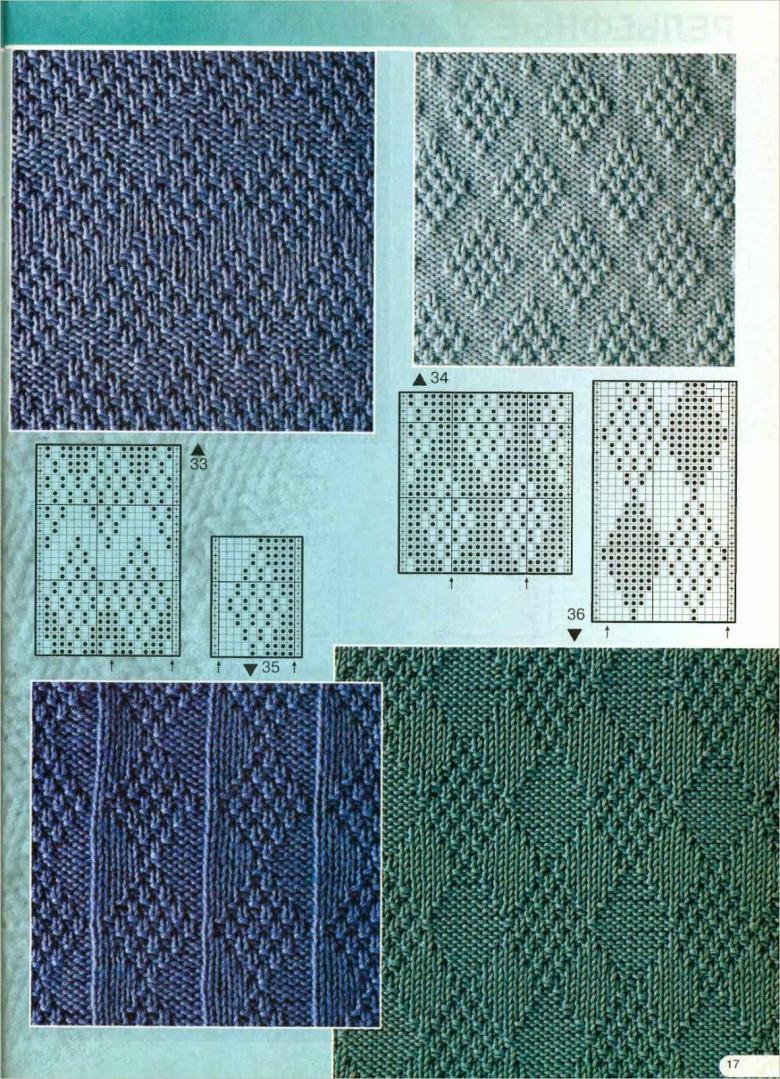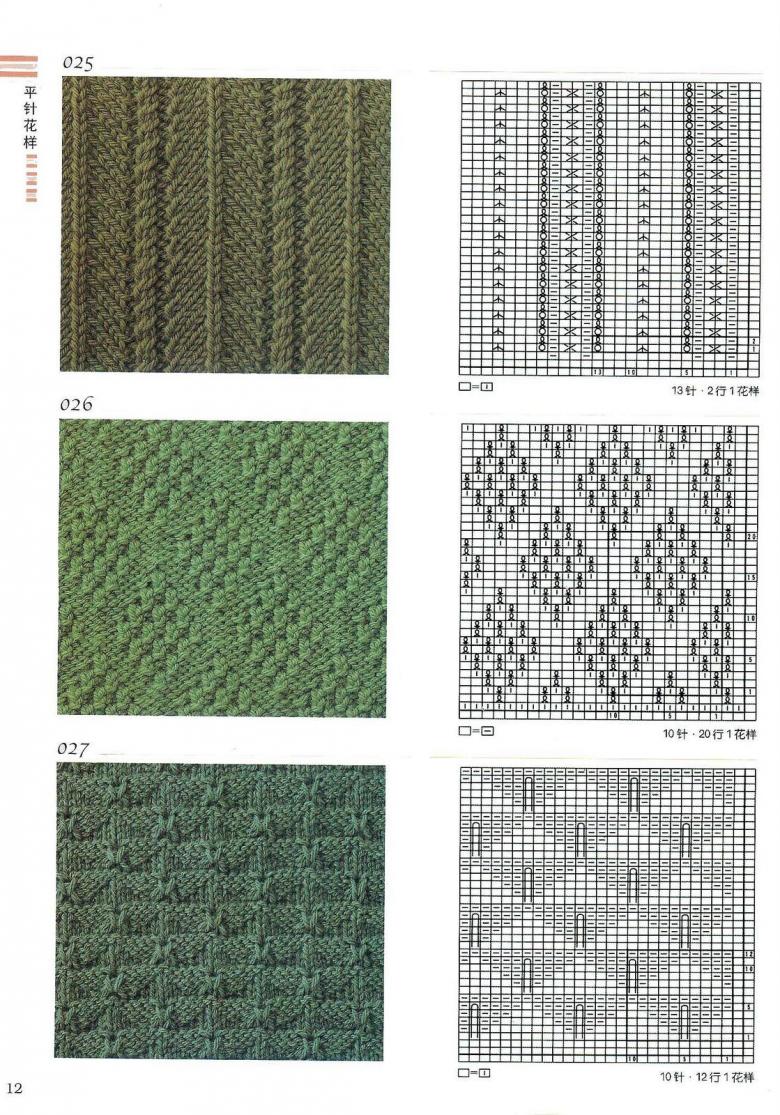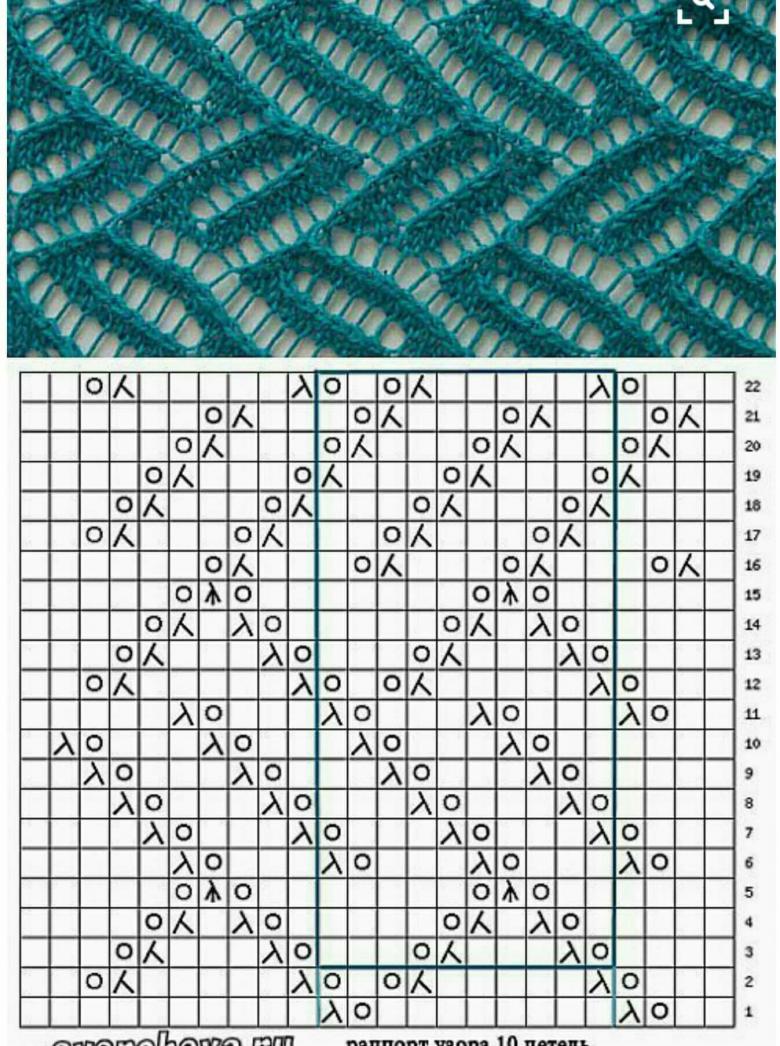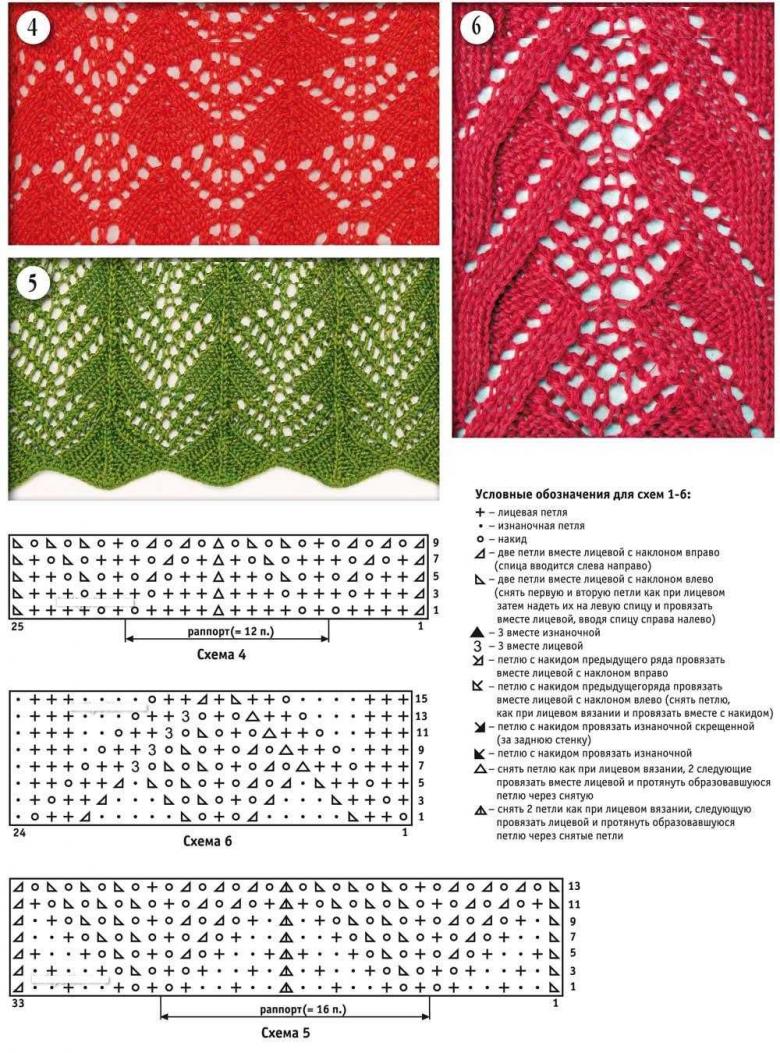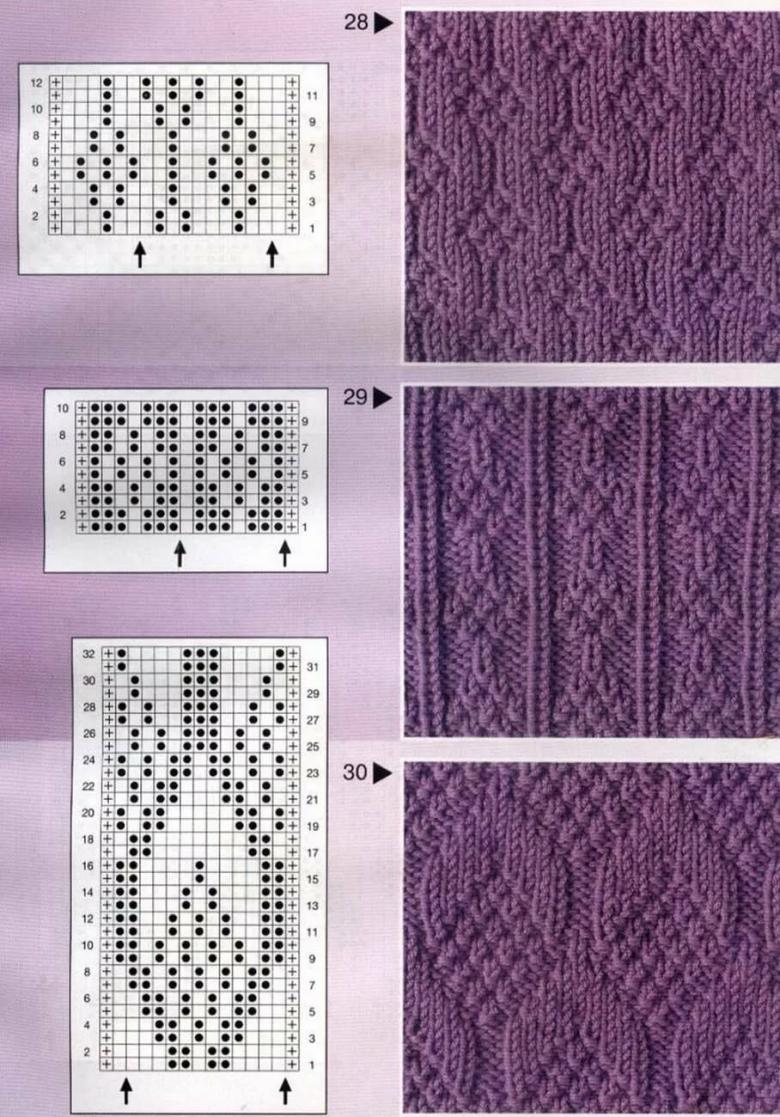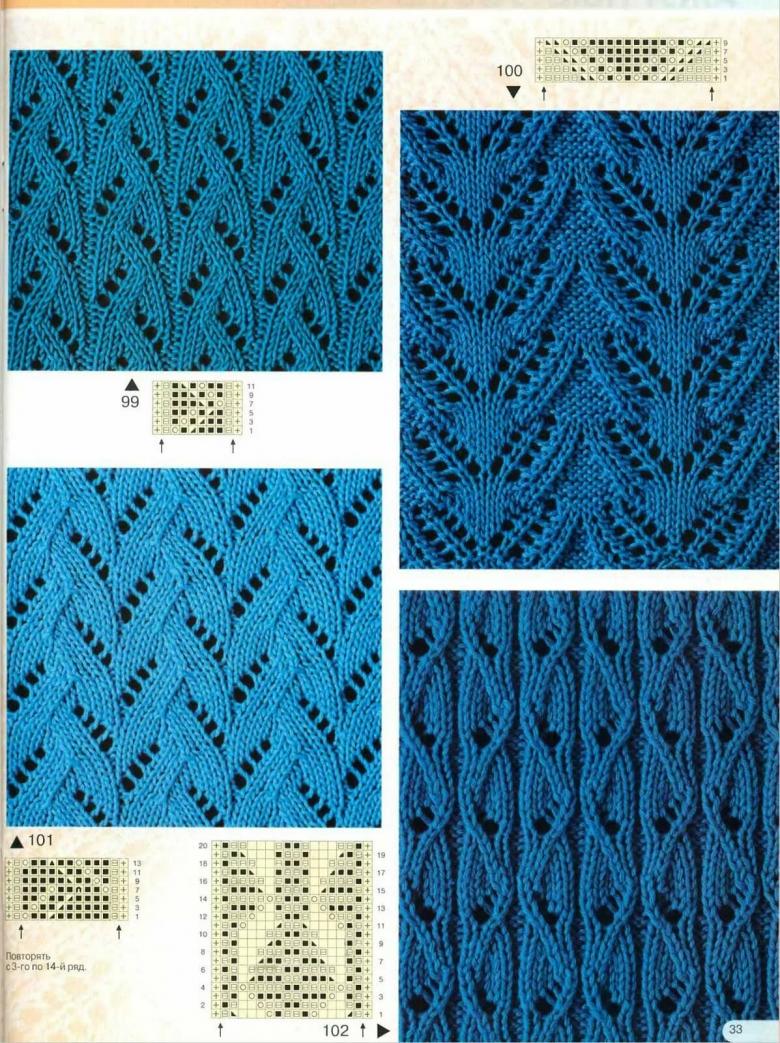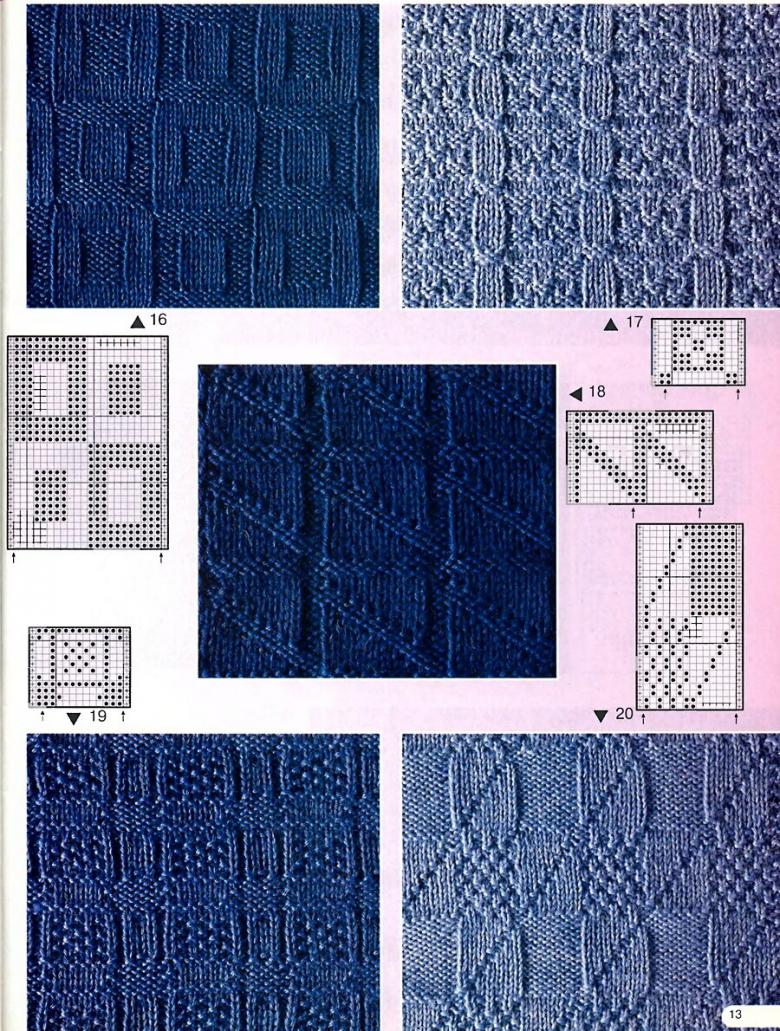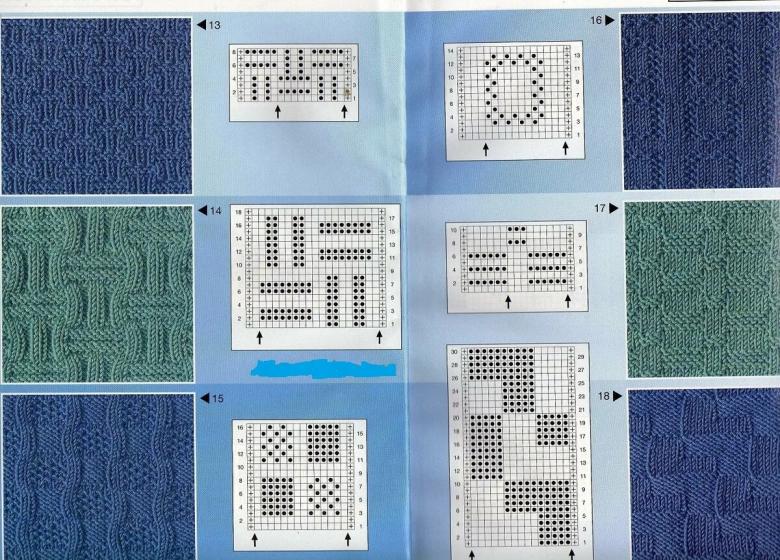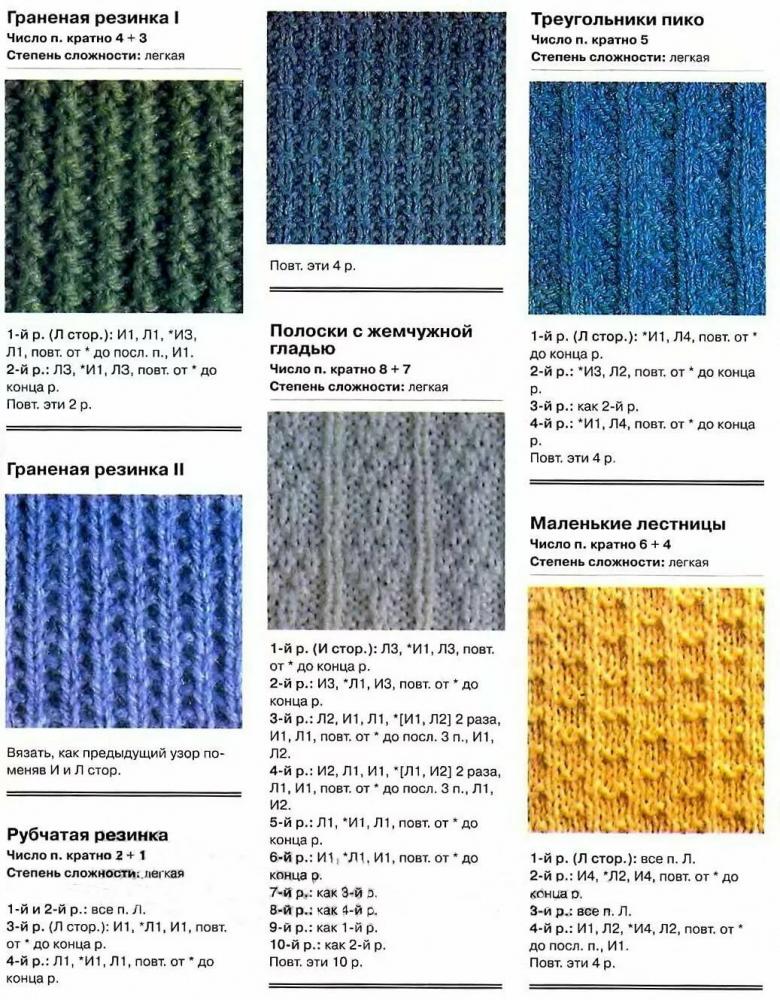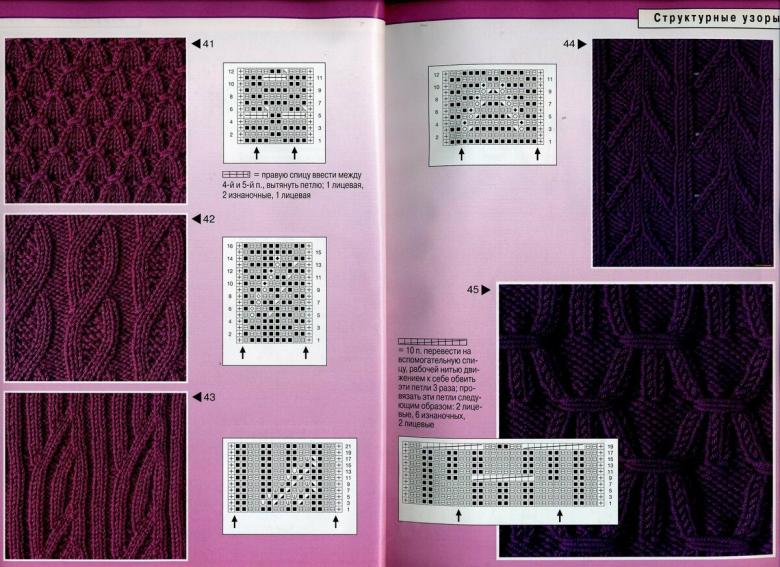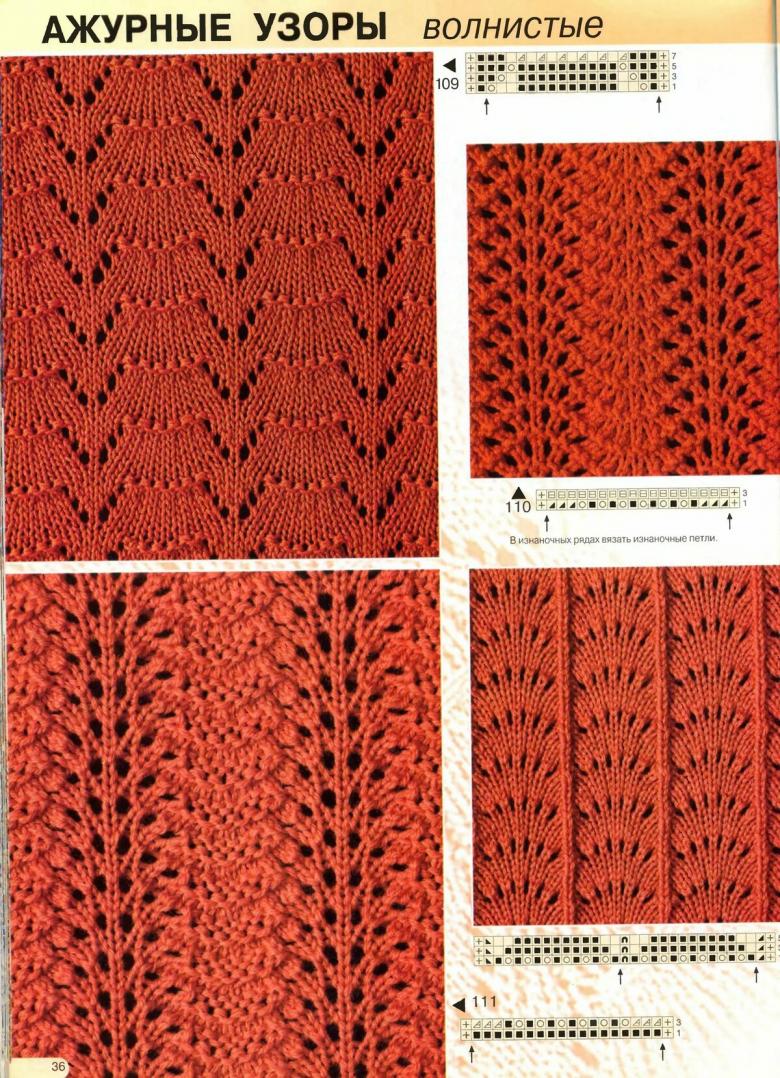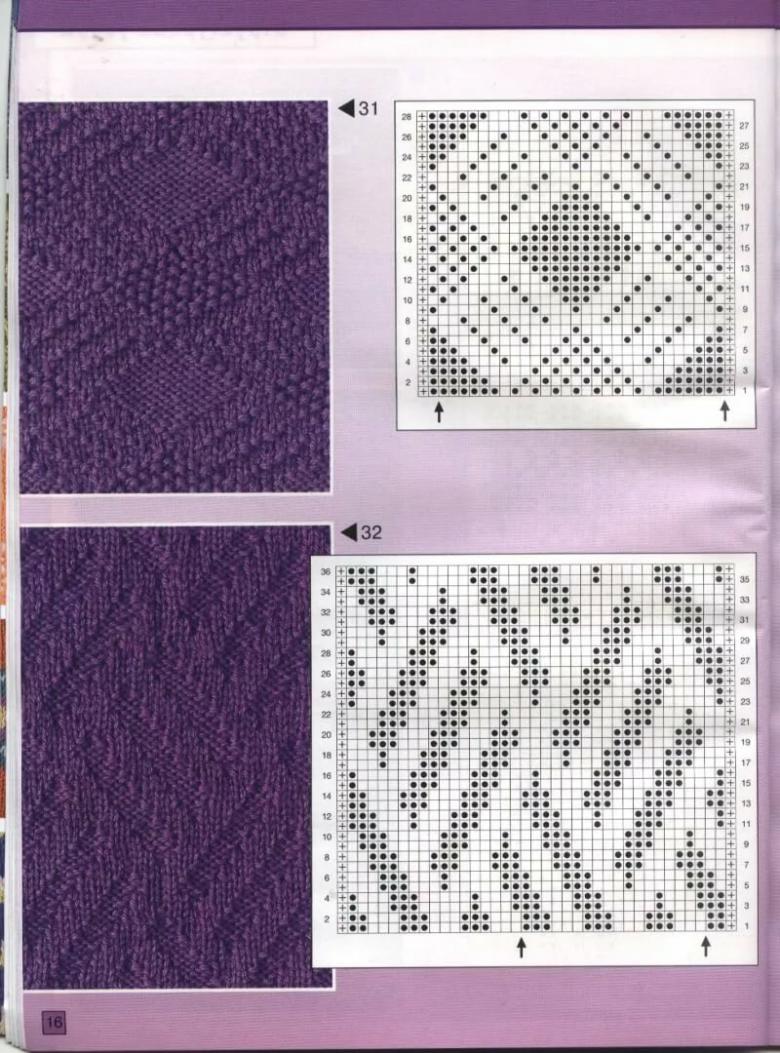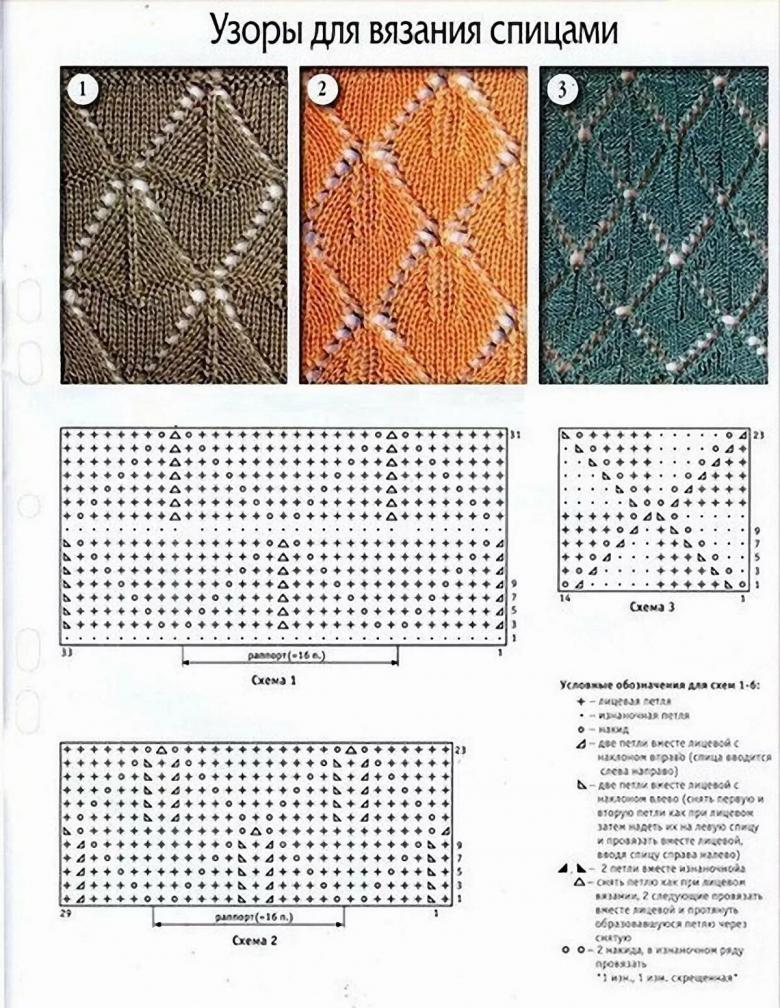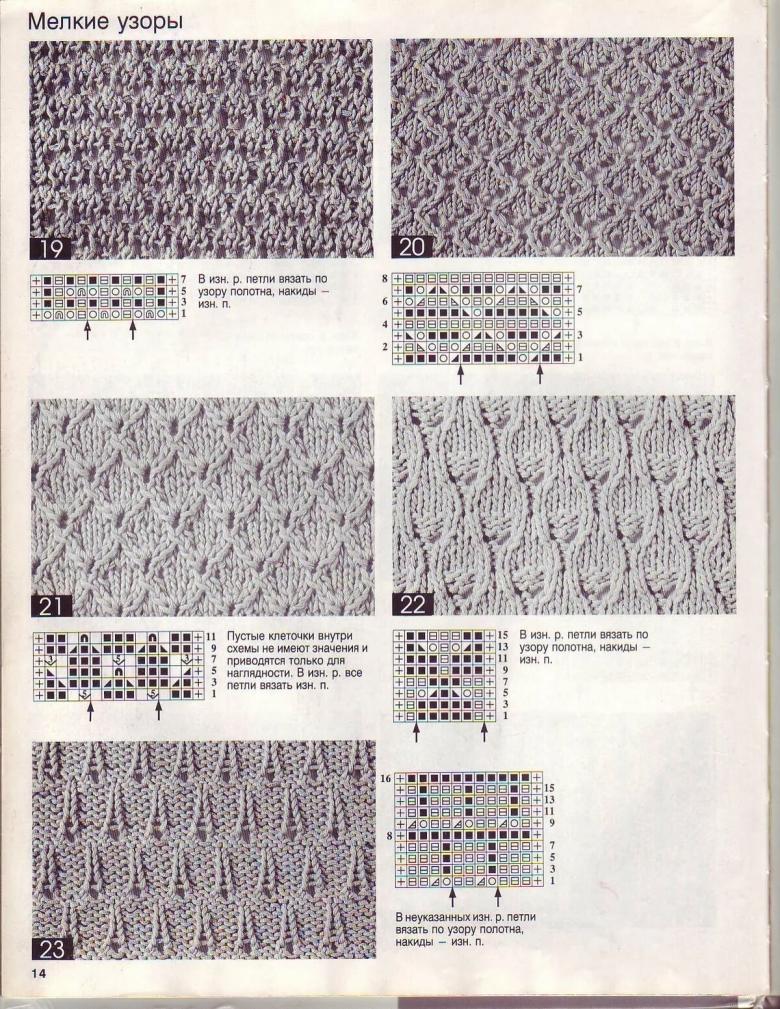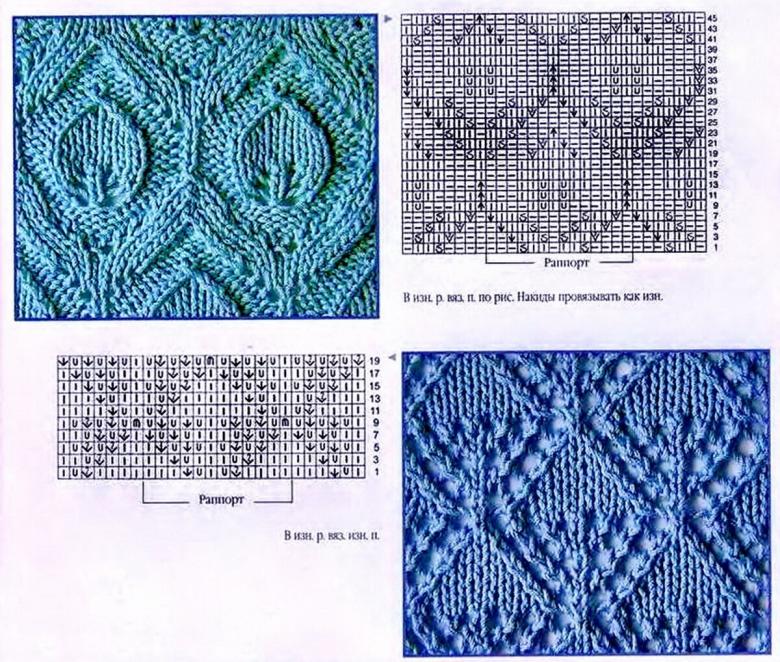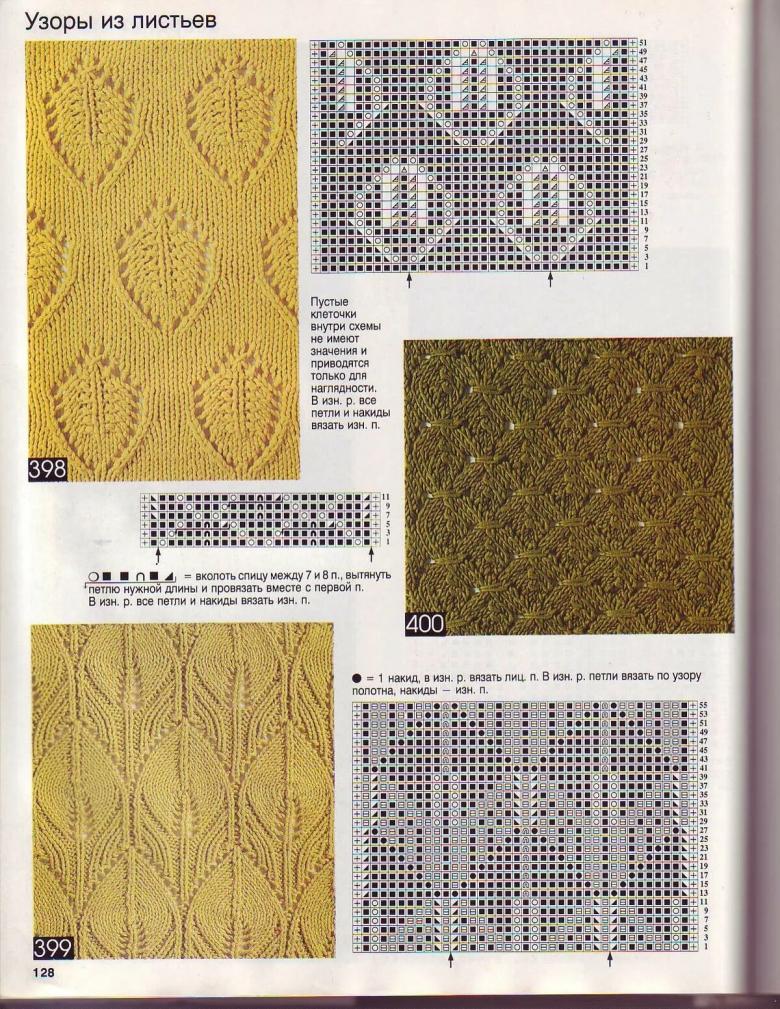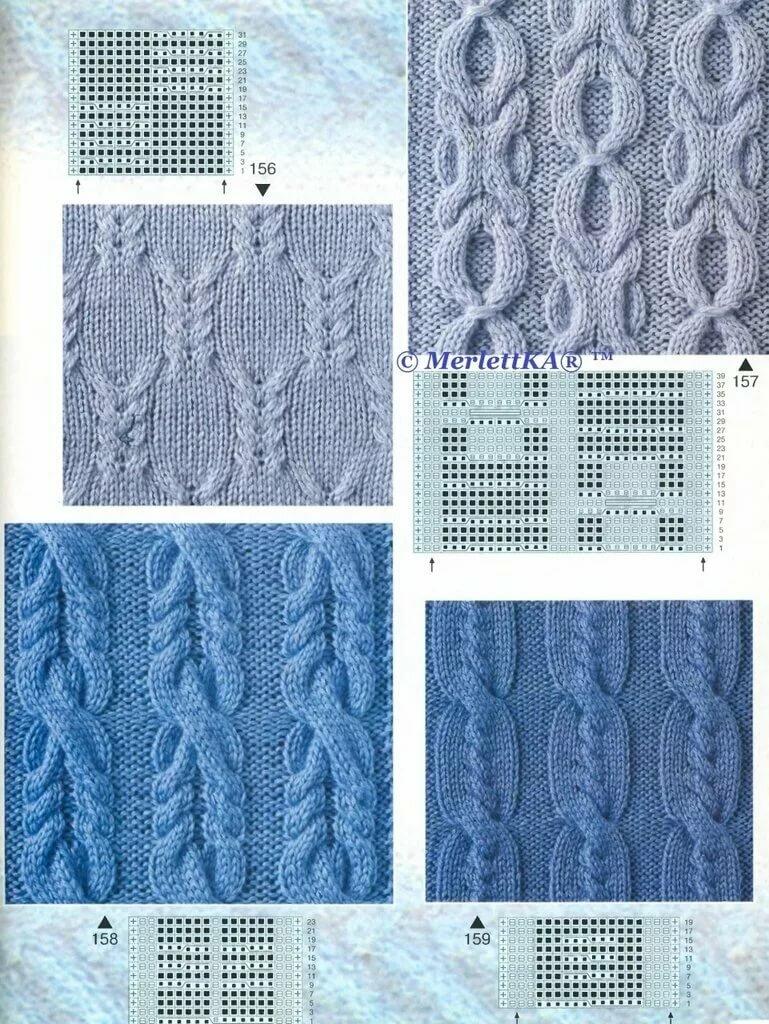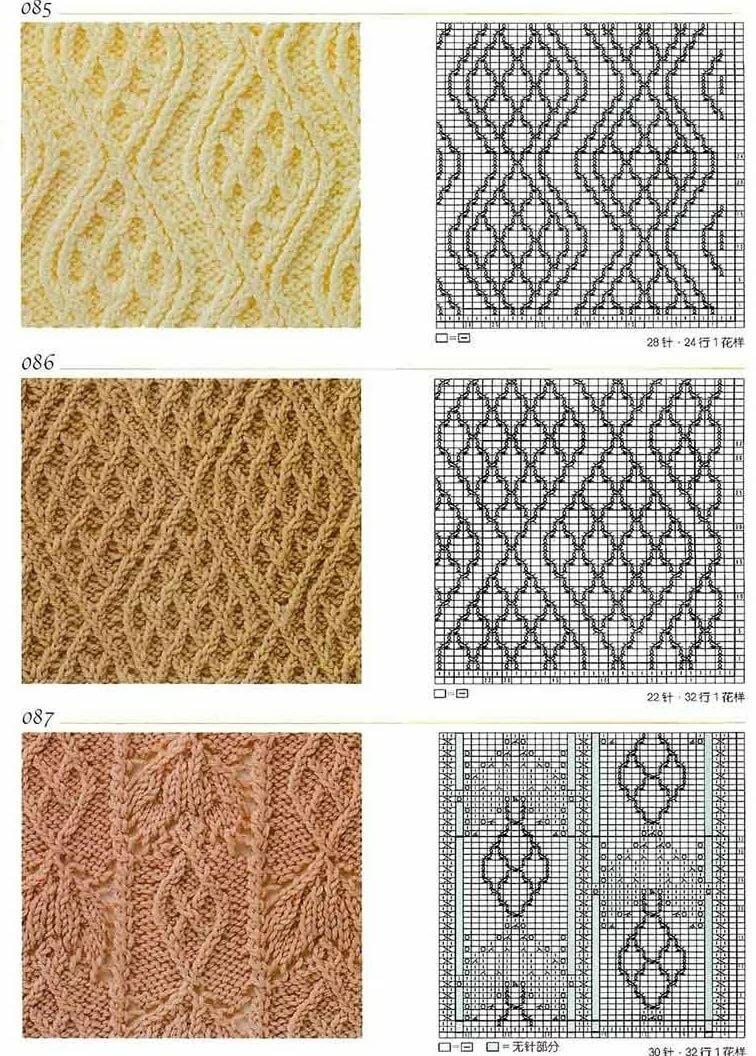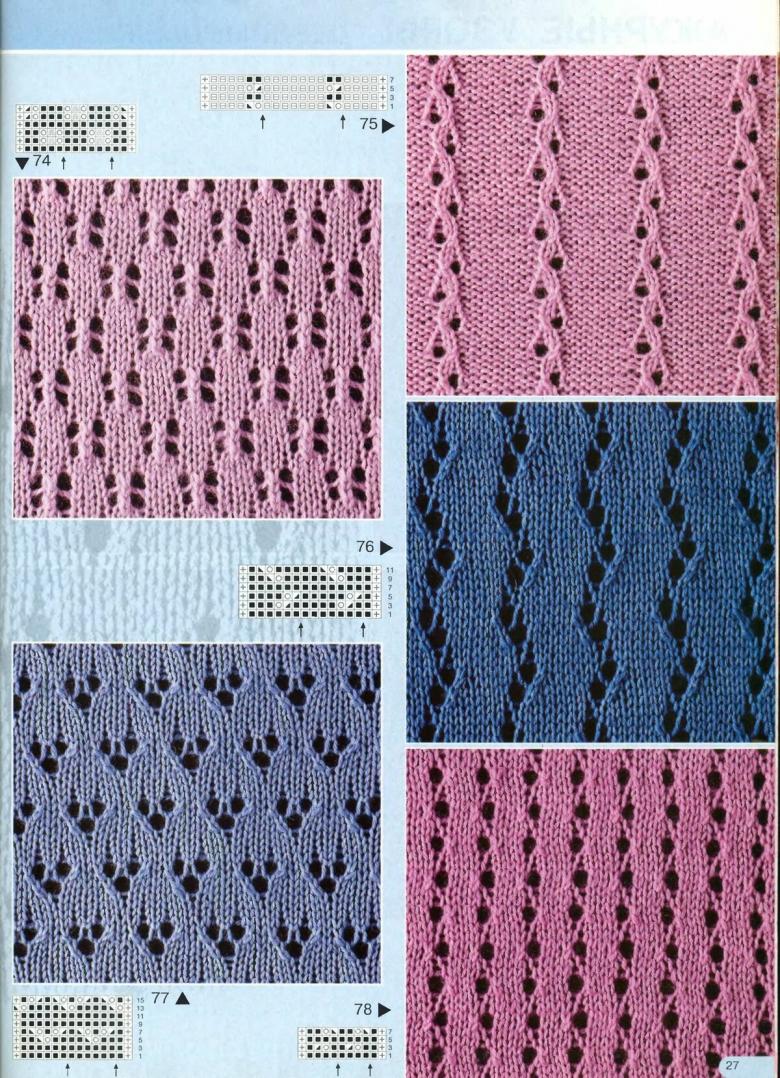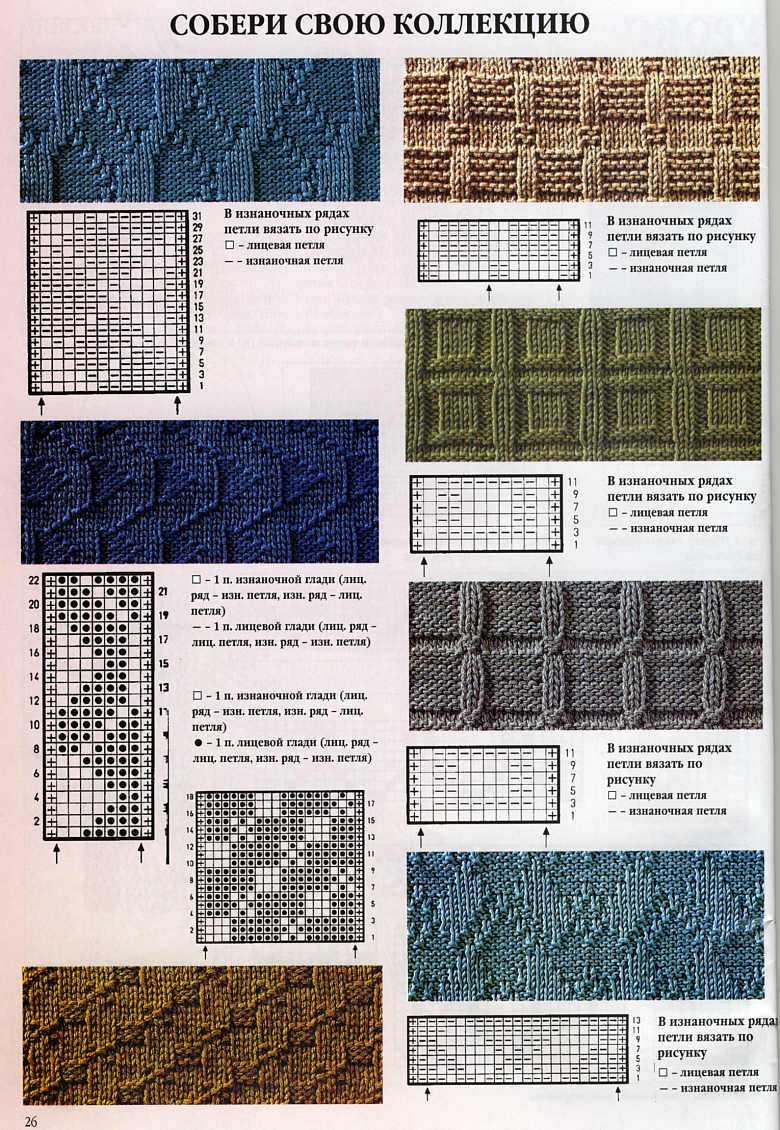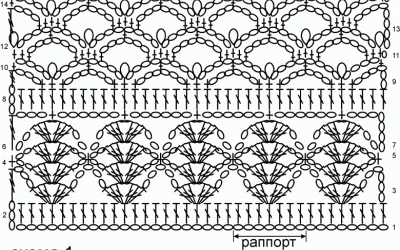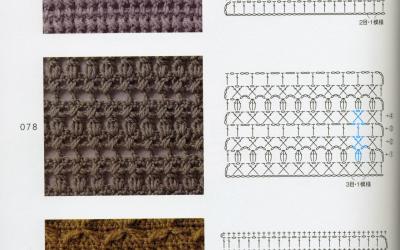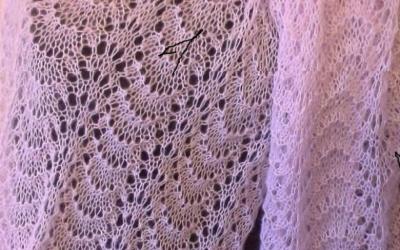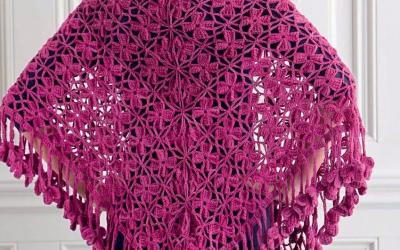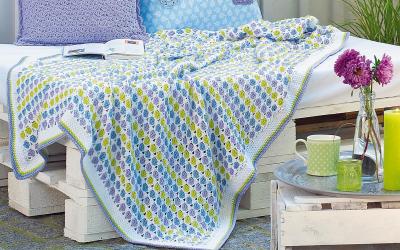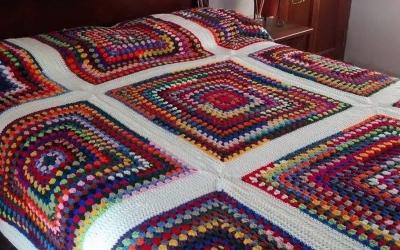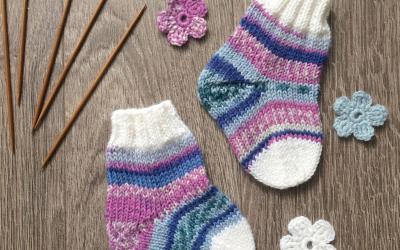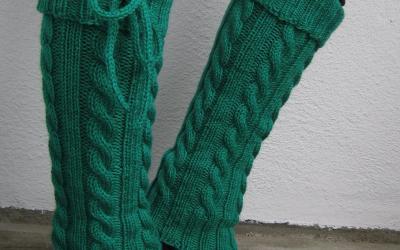Knitting simple patterns with needles and crochet - beautiful and rare crochet patterns
Bound in simple patterns warm things are very attractive, despite their simplicity. Combining different loops in a certain order, you can get great products created with your own hands.
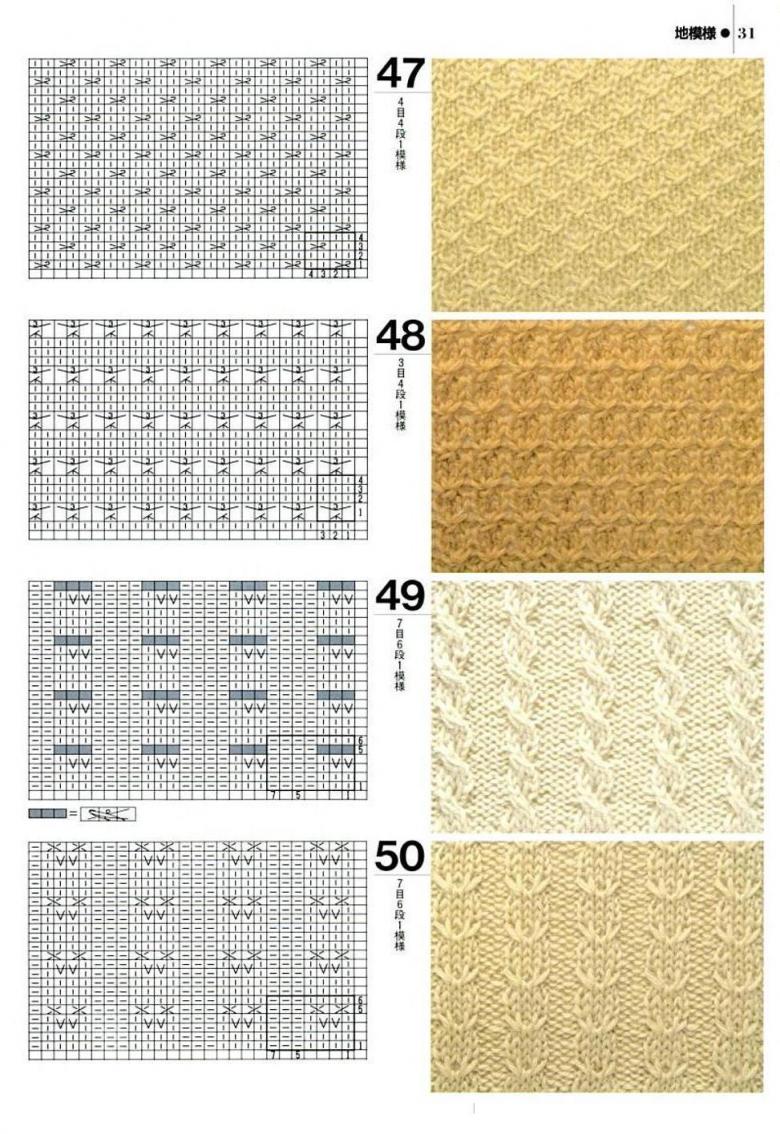
Symbols
Before you start work, you need to get acquainted with the schemes of knitting simple and beautiful patterns. Each scheme consists of symbols that indicate the type of loop. View their meaning can be found in any source: the Internet, printed publications, etc.
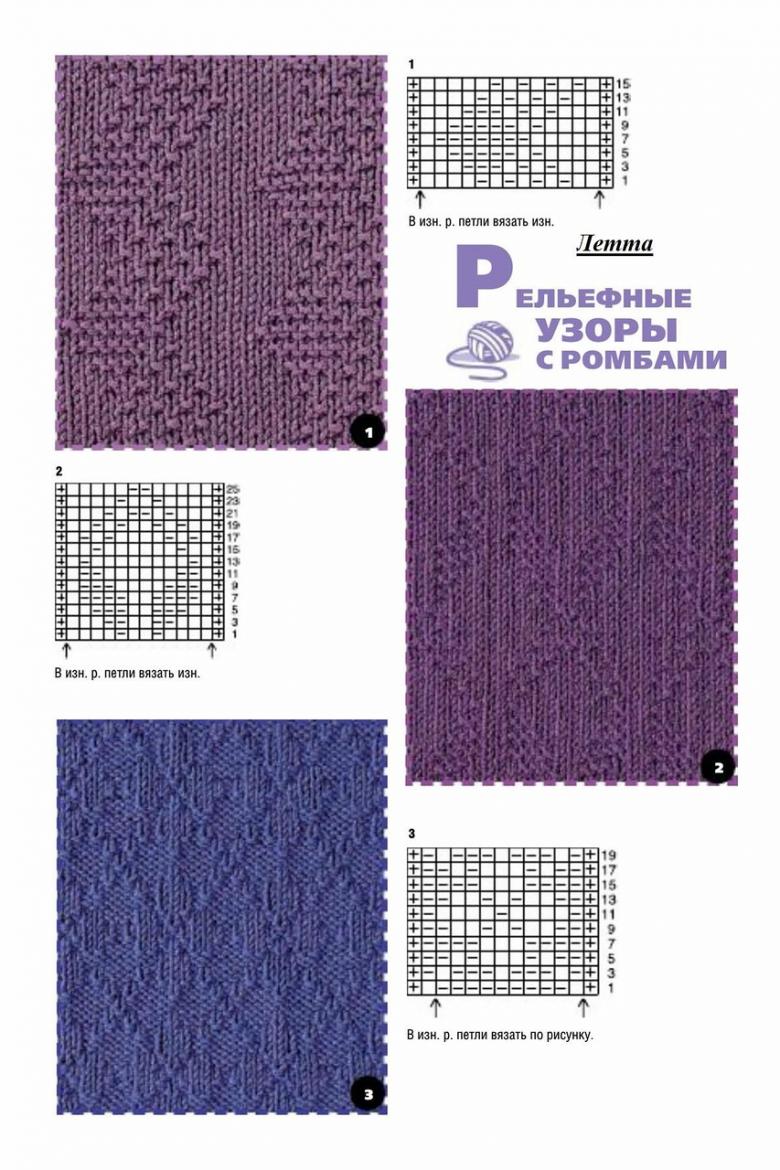
Simple patterns
There are many simple and beautiful patterns for knitting with needles. It is possible to knit a wonderful thing with an ornament consisting only of the front and the back stitches. By alternating them, you can get amazing results. And if they are supplemented by other types of loops, the product will take on an amazing ornament.
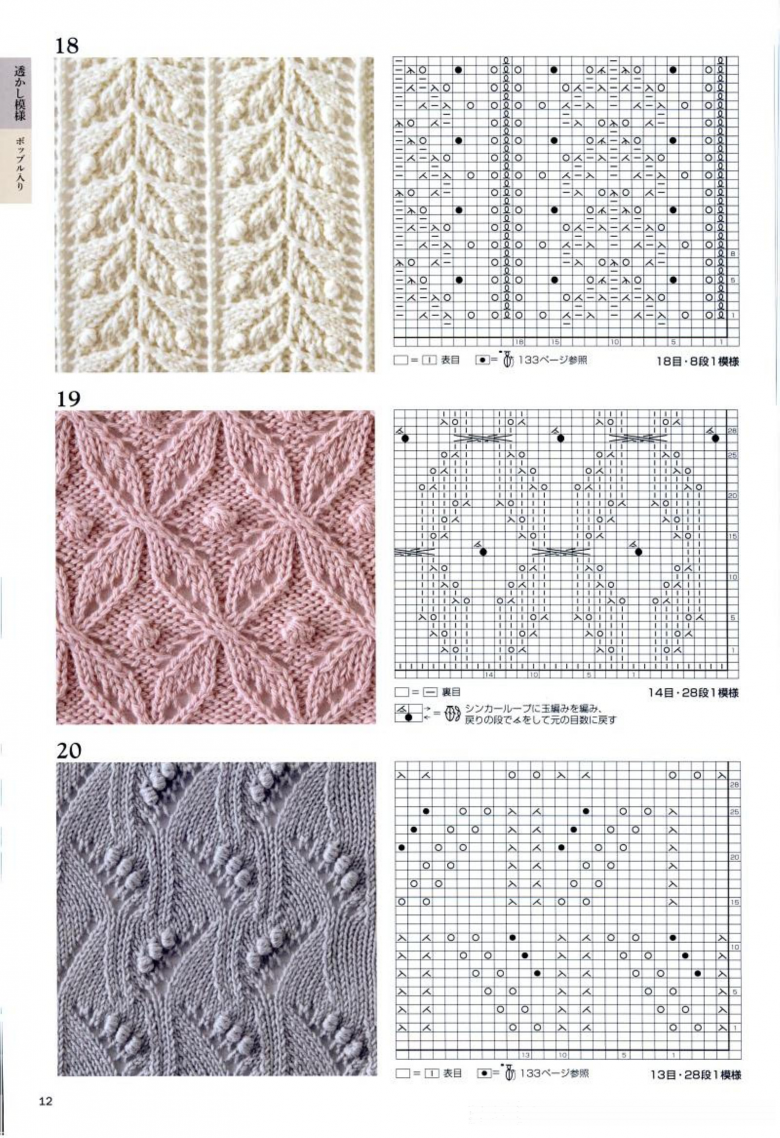
For beginners
It is desirable to begin with the creation of a simple pattern. There is a great option for beginner needleworkers, where the number of loops in the rapport is equal to six. When gaining loops, it is necessary not to forget about the two edge stitches, with which each row will begin and end.

- Rows 1, 2, 3, 7, 8 and 9 alternate three left and three right;
- 4, 6 and 11 - knit on the right;
- 5, 10 and 12 - with loops of the left side.
Then repeat all steps.
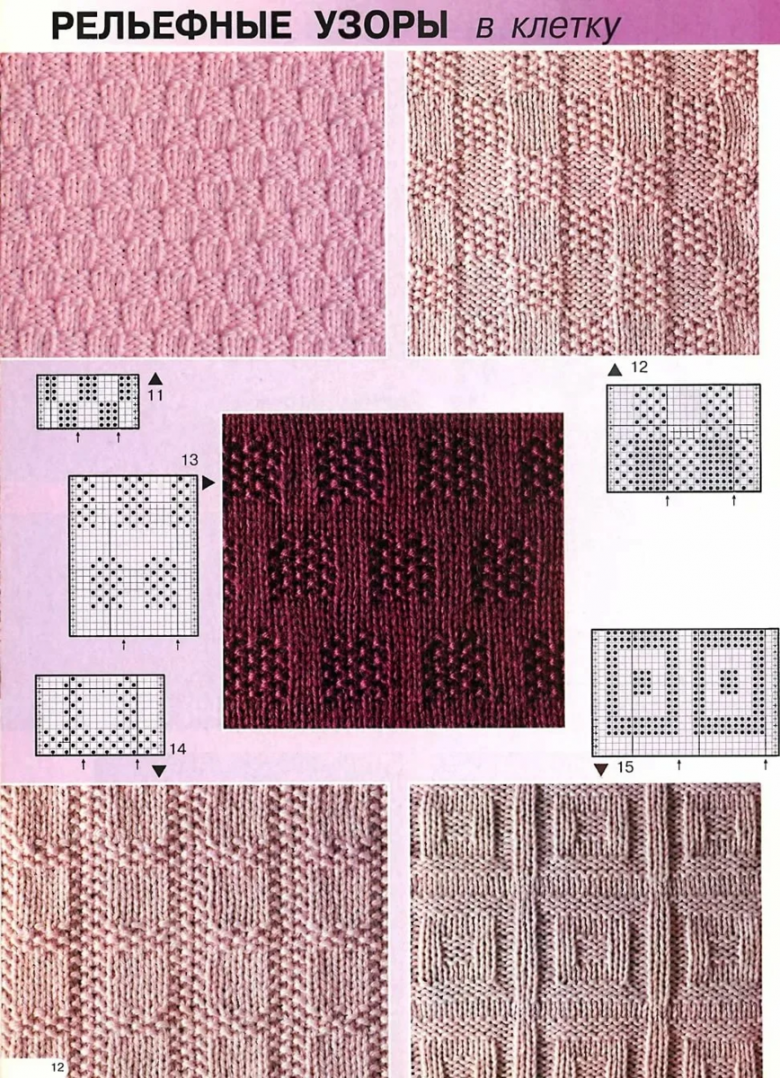
Zigzag .
Pretty simple double-sided pattern in the form of a zigzag, it is suitable for most products. You need to dial a multiple of ten loops, add one for symmetry and do not forget about the two edge loops. Order of work:
- in row 1, alternate one purl and four purl stitches;
- all even-numbered rows knit according to the pattern, i.e. as it is made on the spokes;
- in row 3, alternate two of each stitch and seven of each stitch;
- in row 5, alternate three of them with five of them;
- In row 7, alternate four plains and three faces;
- Row 9 is knitted in an alternation of one obverse and four nays;
- Row 11 is knitted by alternating two obverse and seven nays;
- 13th row is knit in alternation of three obverse and five nons;
- Row 15 is knitted in an alternation of four obverse and three negative stitches.
Then repeat the pattern.
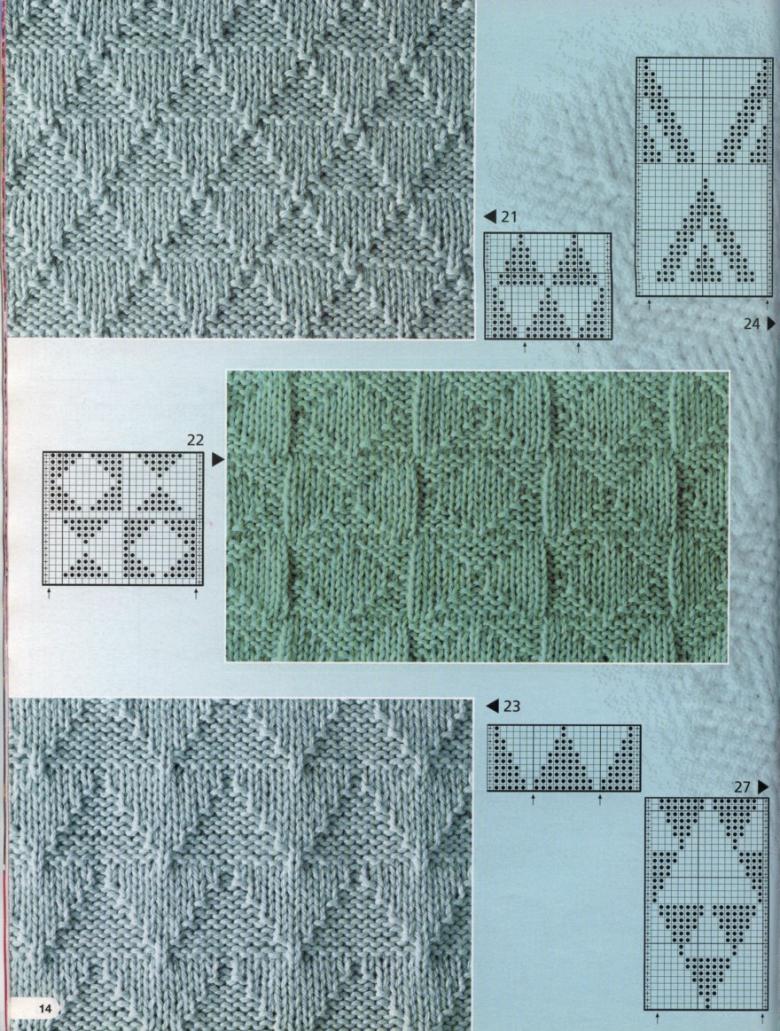
Braid
The pattern in the form of oblique plaits obtained as a result of the displacement of the rapport, consisting of six loops. Such an ornament looks beautiful on any item of clothing.
- The first row consists of four left-handed and two right-handed loops;
- All even-numbered rows are to be knitted in accordance with the pattern, i.e. as it is made on the spokes;
- 3 - is knitted in the same way as the first;
- 5 and 7 - alternate two left and two right loops;
- 9 and 11 - consist of two left and four right loops.
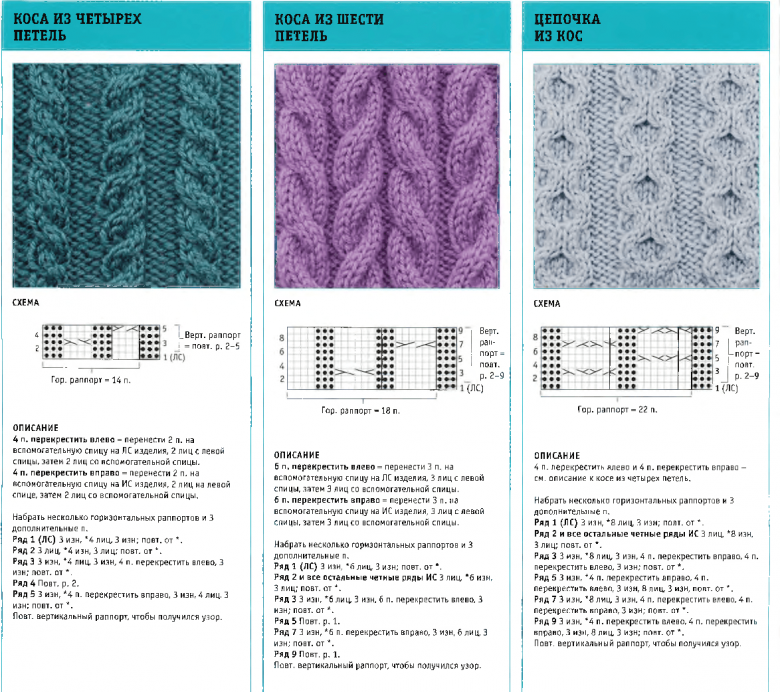
Braiding .
This pattern is easy enough to knit with spokes, it will not give much trouble, as performed by elementary loops. It is great for products of large size, creating an amazing relief.
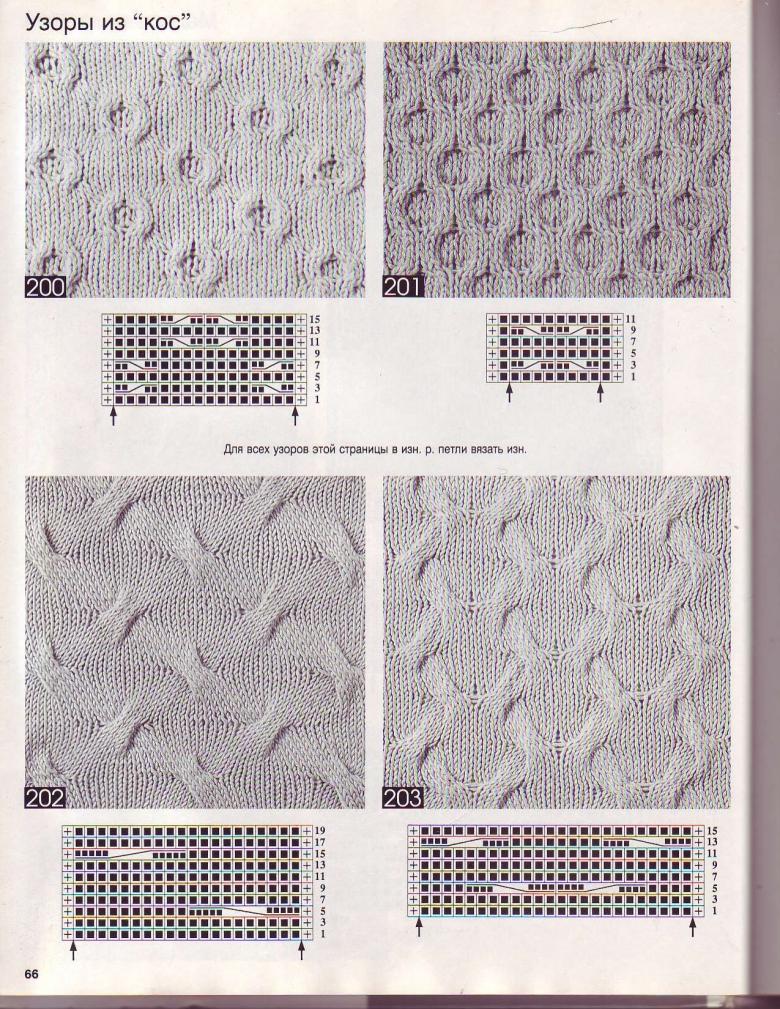
Each row consists of a number of loops divisible by ten, not forgetting the edge loops.
- The 1st and 3rd rows are knitted with seven loops and three loops on the outside;
- The 2nd row is made up of three loops and seven of them;
- 4th and 8th stitches are all plains;
- 5th and 7th are performed with two plains, three obverse stitches, and five obverse stitches;
- The 6th is created with five lefts, three wrongs and two rights;
Then you need to repeat all the actions from the first row.
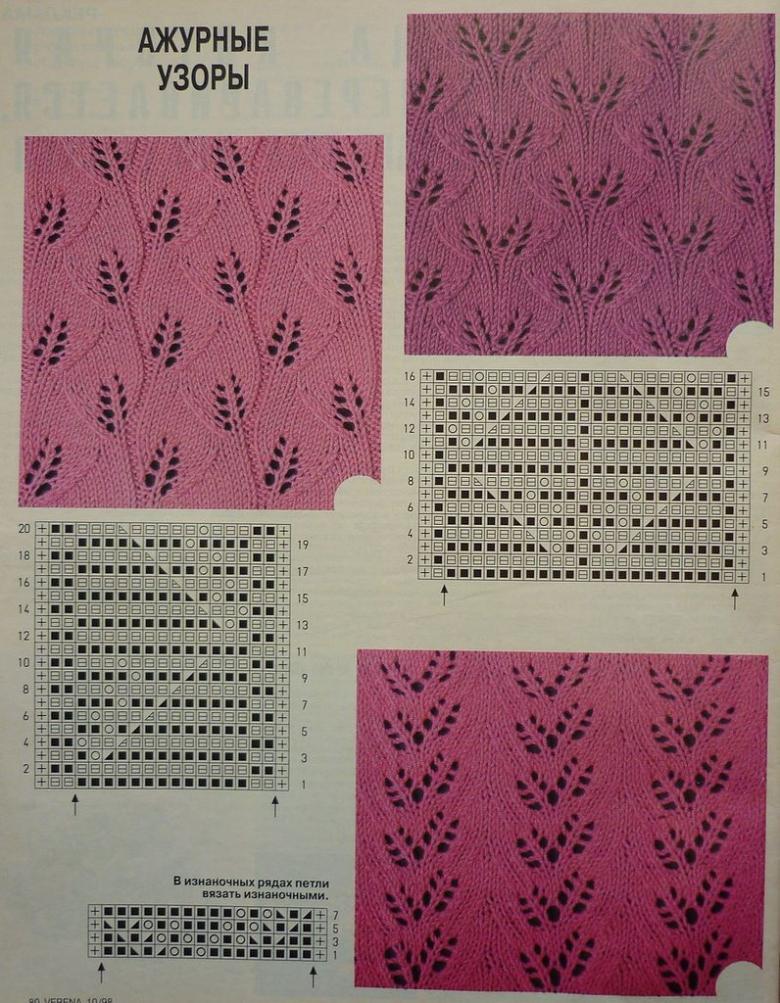
Triangles
The triangle pattern is very simple, but turns out nice, and whether it is from the right side or the wrong side. It is because of this feature ornament is suitable for plaids, scarves and many other products.
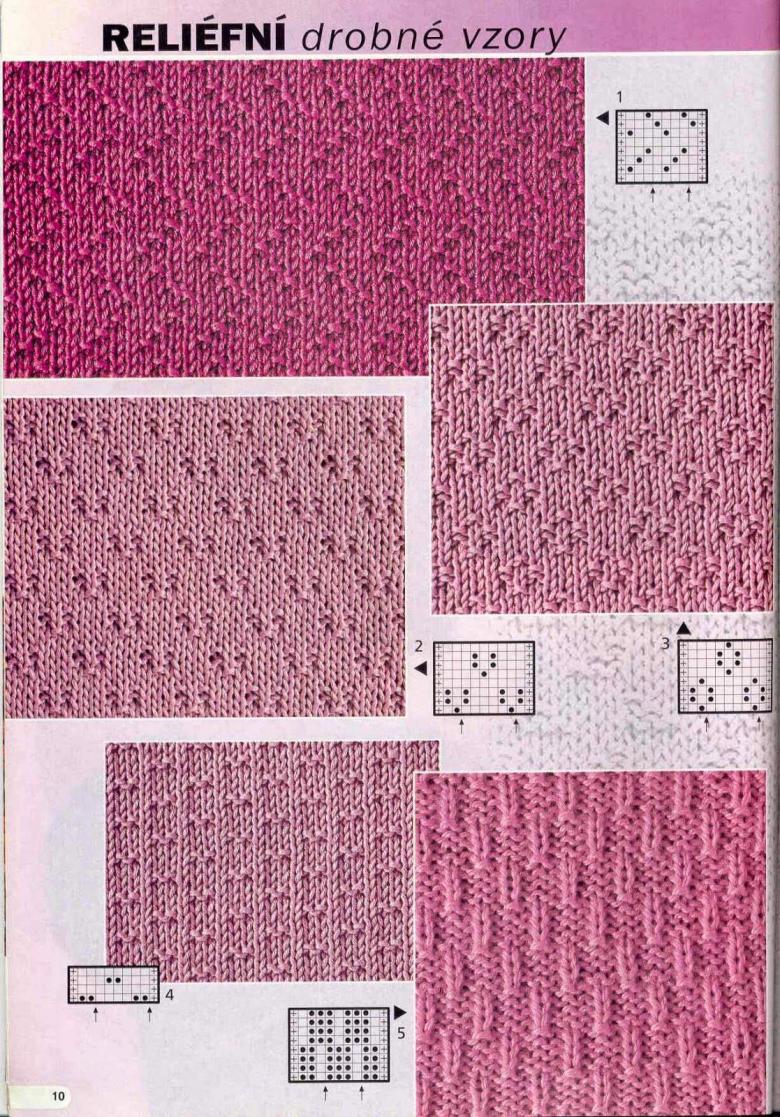
Knit a set of loops, a multiple of eight, add one for symmetry and take into account the edge loops.
- The first row is knitted by alternating through one stitch, starting with the wrong one;
- The second row is made by alternating four stitches through one stitch, starting with a purple stitch and then four stitches through four purple stitches;
- The third stitch is two stitches, then alternate through one stitch;
- The fourth - three facing, one to the right, one to the left, one to the right, one to the left, and three to the right;
- Fifth - three to the left, one to the right, one to the left, one to the right, three to the right;
- The sixth - two left, one right, one left, one right, and two left;
- The seventh, by four in, one in, one out, and four in;
- Eighth - alternation through one, beginning with the right;
From the ninth row the pattern should be repeated from row 1.
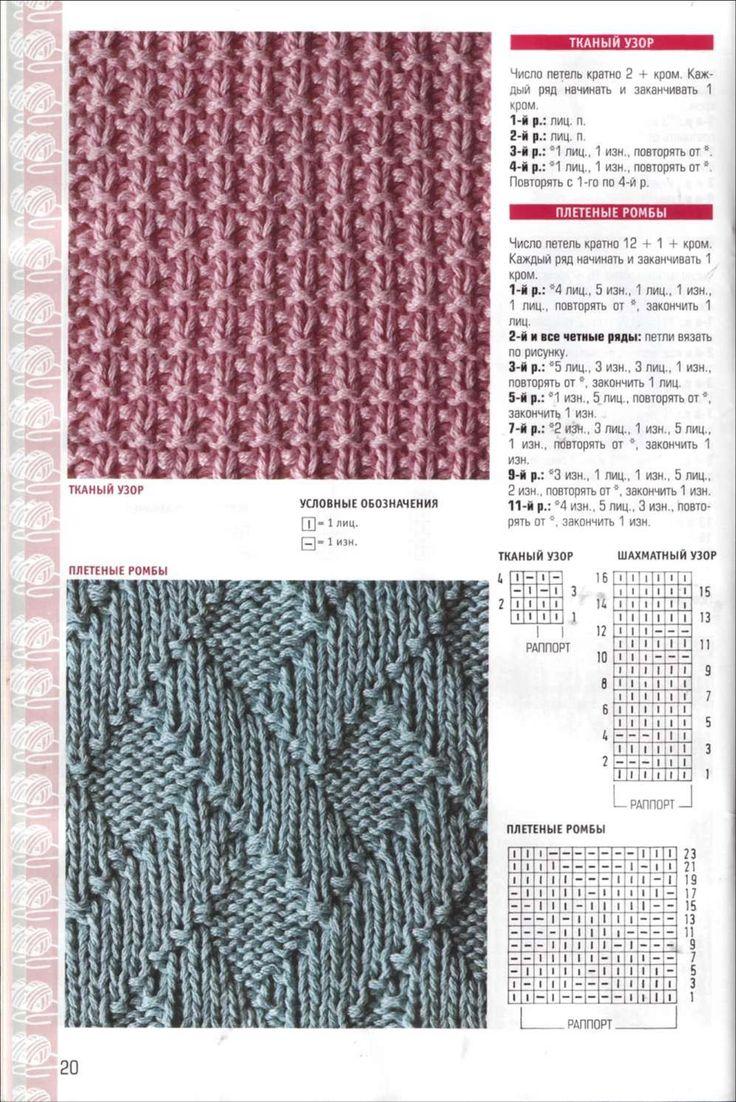
By crochet
Crochet simple openwork patterns for novice needleworkers will be a busy business. With the help of a hook it is possible to knit many different beautiful things. Having gained experience, you can create more complicated patterns.

Chain
It is quite simple to knit a chain of a certain size of air loops. To do this, you need to dial:
- The first row is knit with one column with a lap in the fourth loop and one of the same column in the next loop;
- The second - two air loops for lifting and one column with a stitch to the end of the row.
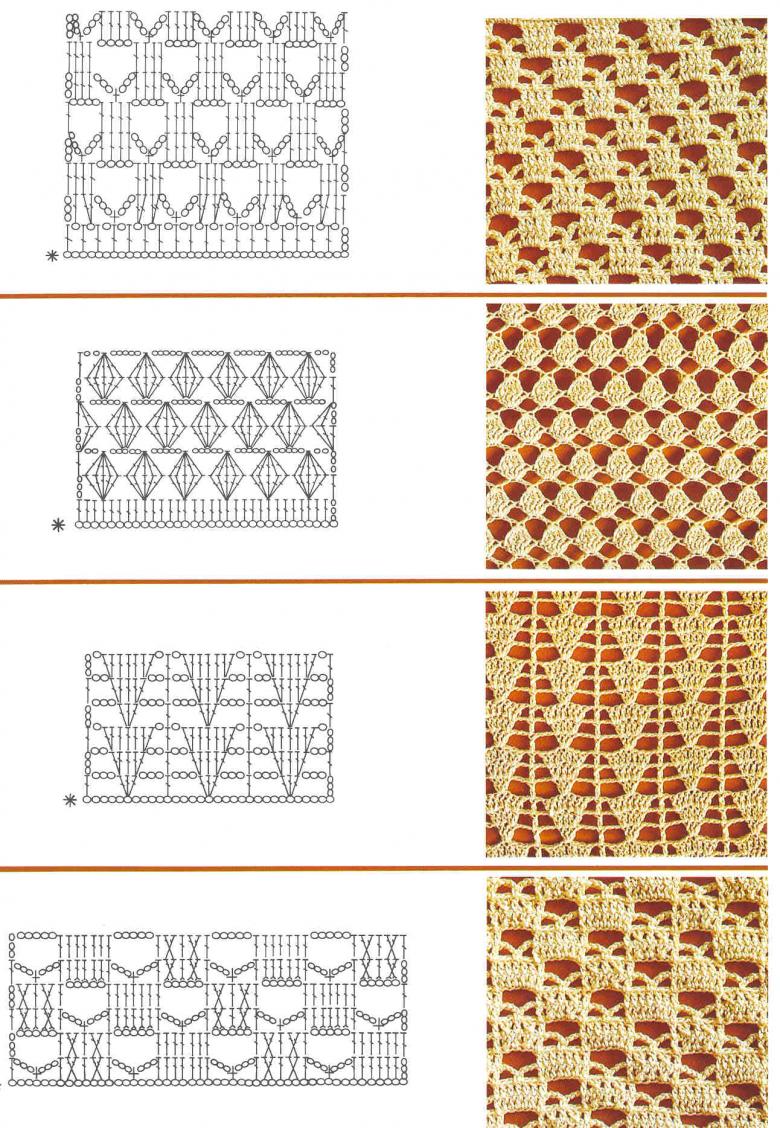
Air Knitting #1.
To get the skill, dial in a number of loops multiple of two, add one for symmetry and a couple of lift loops.
- The first row: two air lift loops, a single column with a lap and a skip one on the chain, again a single column with a lap, one air loop, one column in the loop of the first column;
- The second row - two air lift loops, one double-quilted column, and the same in the arch between the two columns of the previous row, one air loop, one double-quilted column in the same arch;
- Knit the rest in the same way as the second row.

Air Knitting #2
It is possible to make a trial work by recruiting a chain of puffed loops, the number of multiples of six, and an additional five loops.
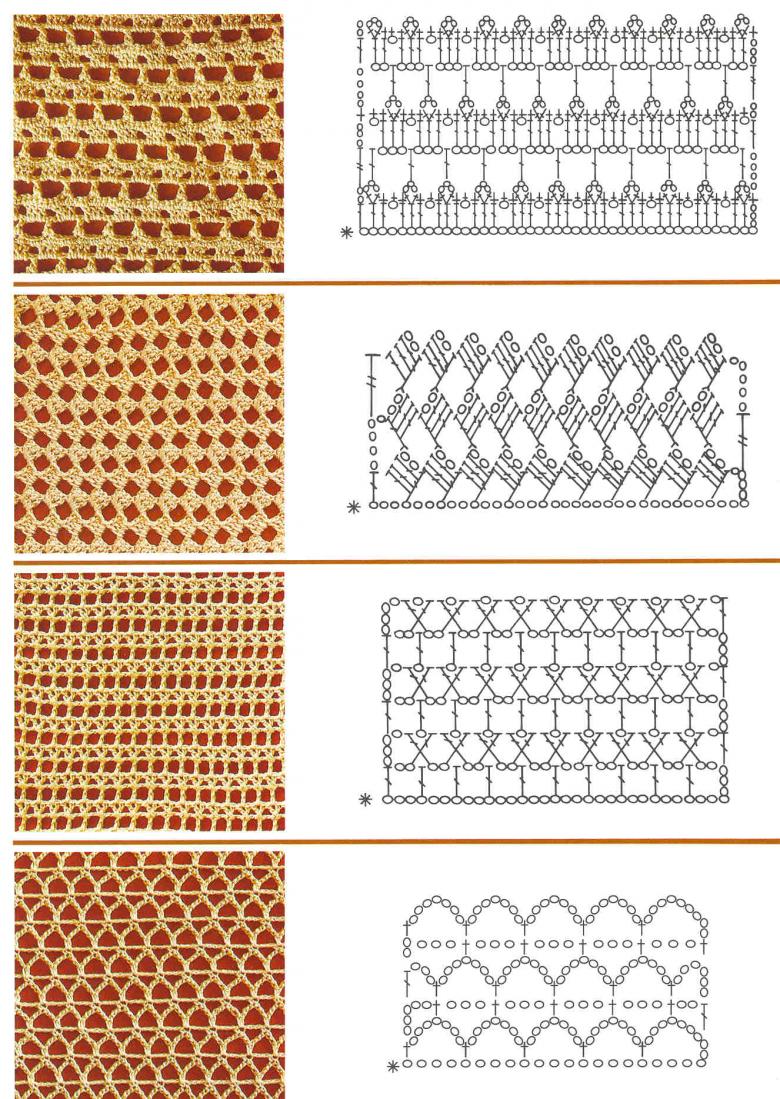
Start knitting with one column without a stitch in the eighth loop from the hook, then skip two loops in the chain, gain one column with a stitch, again skip two loops, then one column without a stitch, and again skip two loops and gain one column with a stitch;

Next, three easy loops, a single single single stitch, and one single stitch, inserted into the loop of the column of the row before the row was typed. Next, you need to dial in a couple of loops (not too tight), one no-quilt column in the column, of the previous row. After that, you need to take a one-quarter stitch into the previous stitch and two easy stitches. Next, knit one no-sewing column in the third stitch of the previous set;
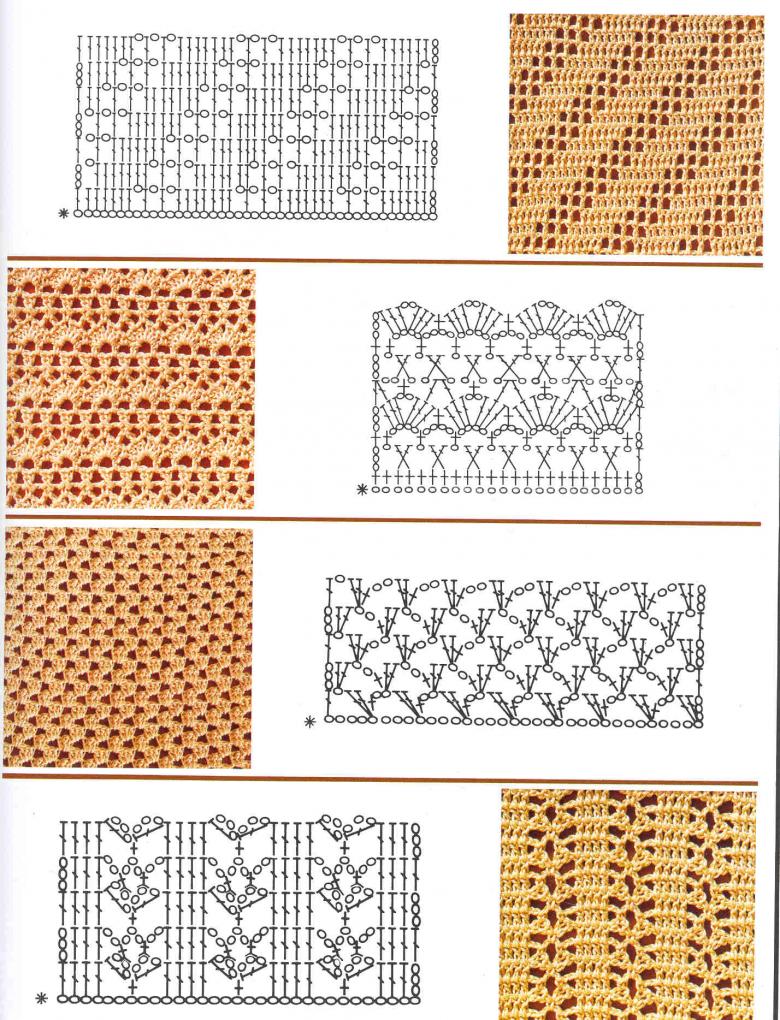
Next, knit five loosened loops in the row, one no-neck column in the column of the previous set. Next, two loosened loops, one column with a stitch in the column of the previous set. At the end of the row to gain two weak loops, a column without a stitch in the column with a stitch, previously created row, two, not tight, loops, one column with a stitch in the third loop, previously typed row.
Repeat the pattern from the second row.
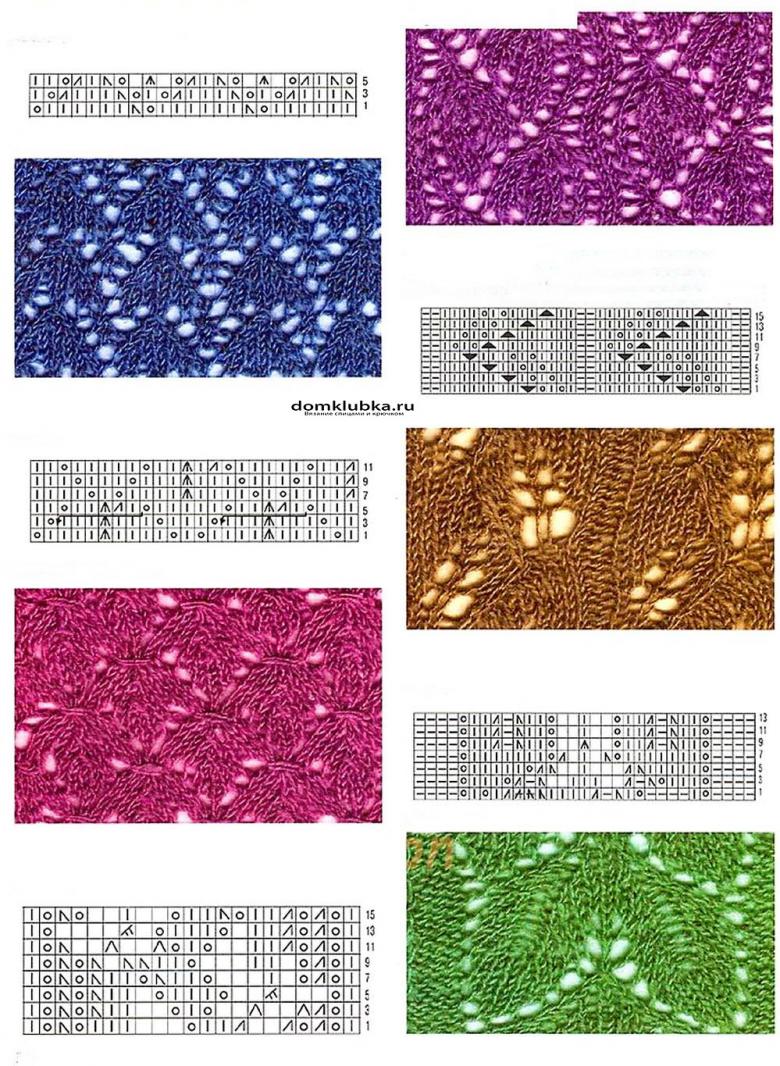
The method of knitting, whether with knitting needles or crochet, you can create a closet for the whole family. Favorite models can take notes and keep it always on hand, gradually replenishing the archive with new items.

